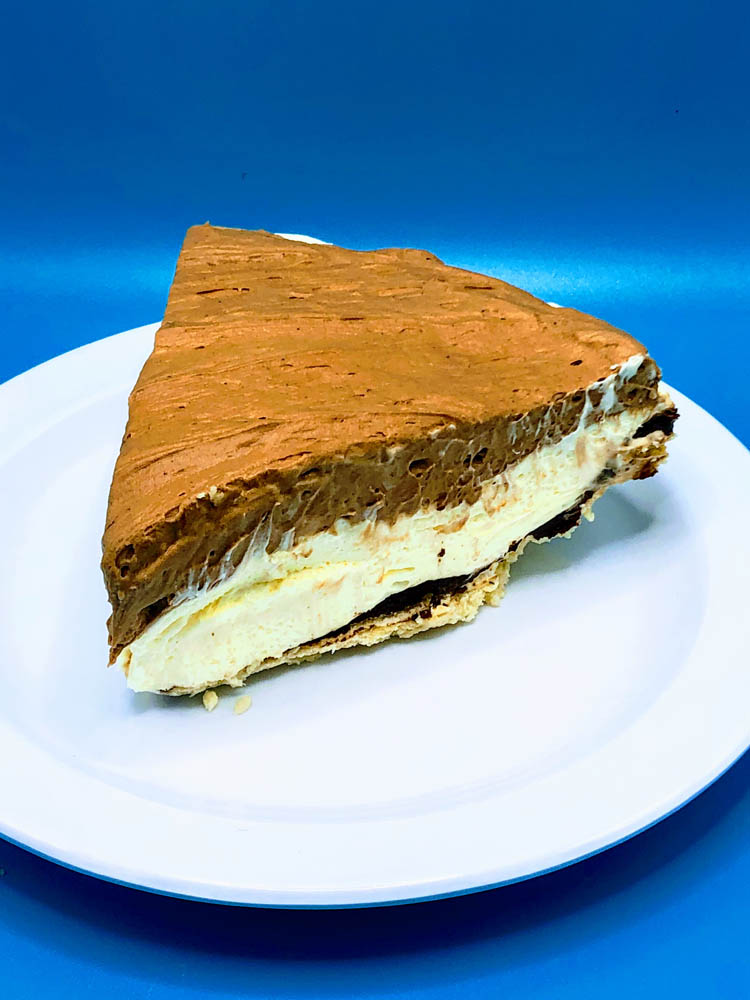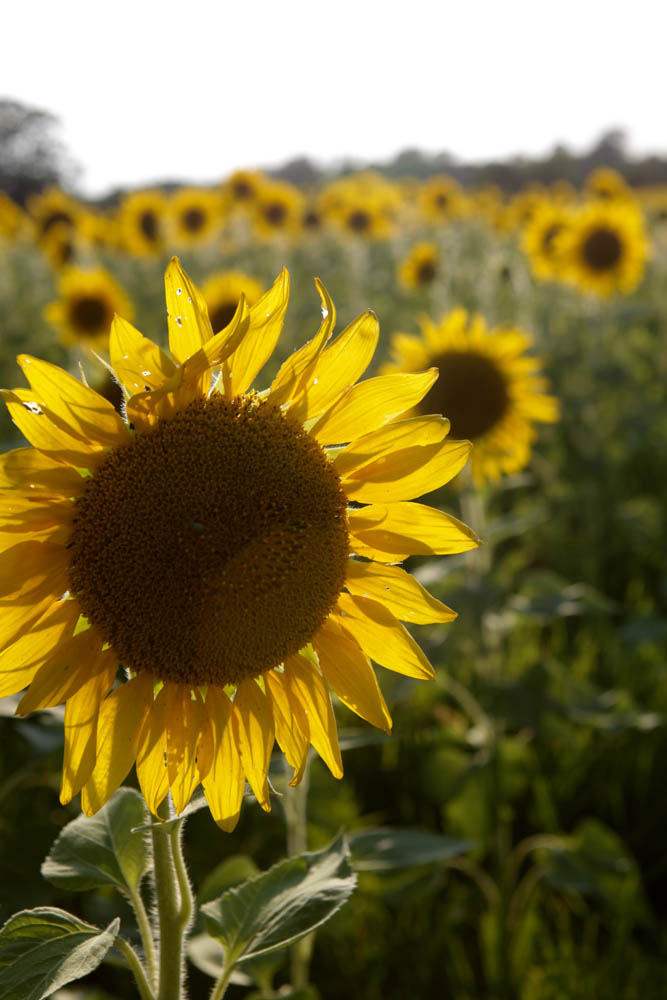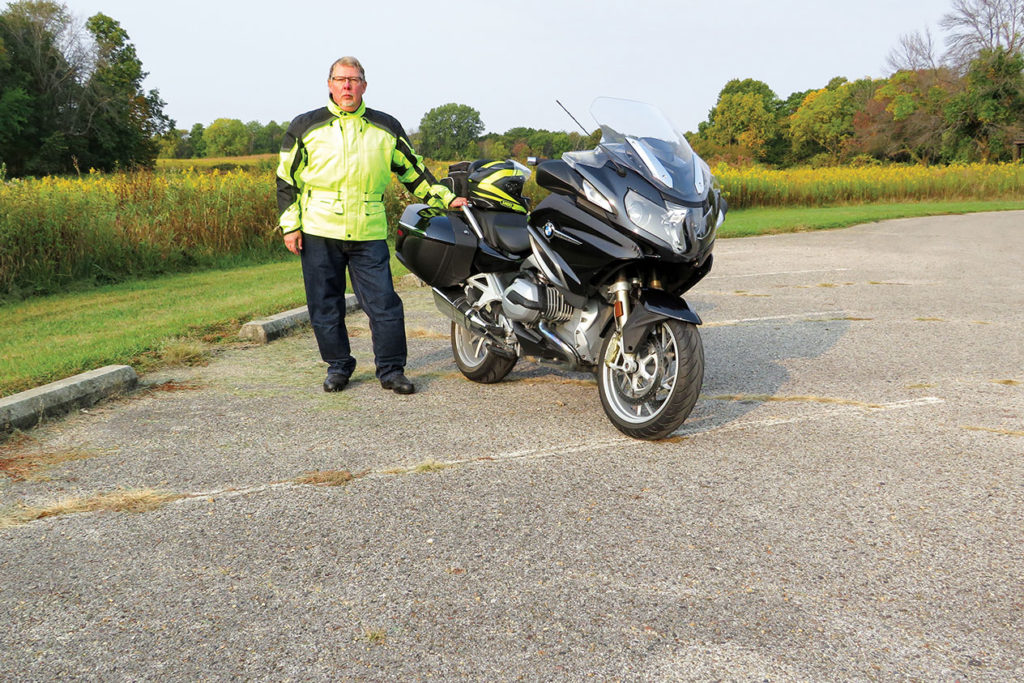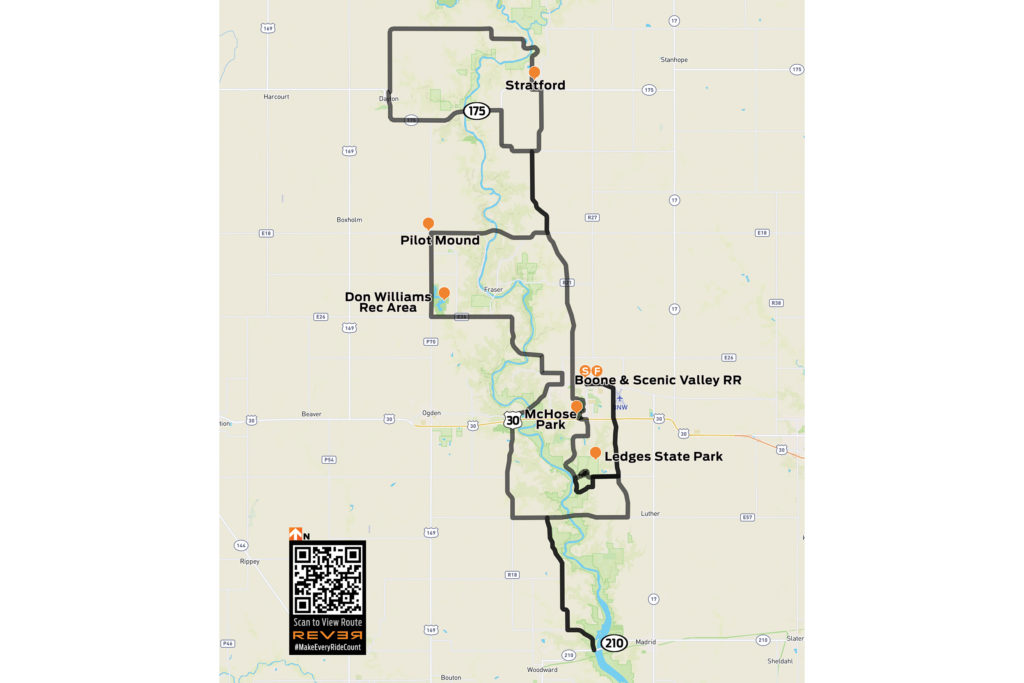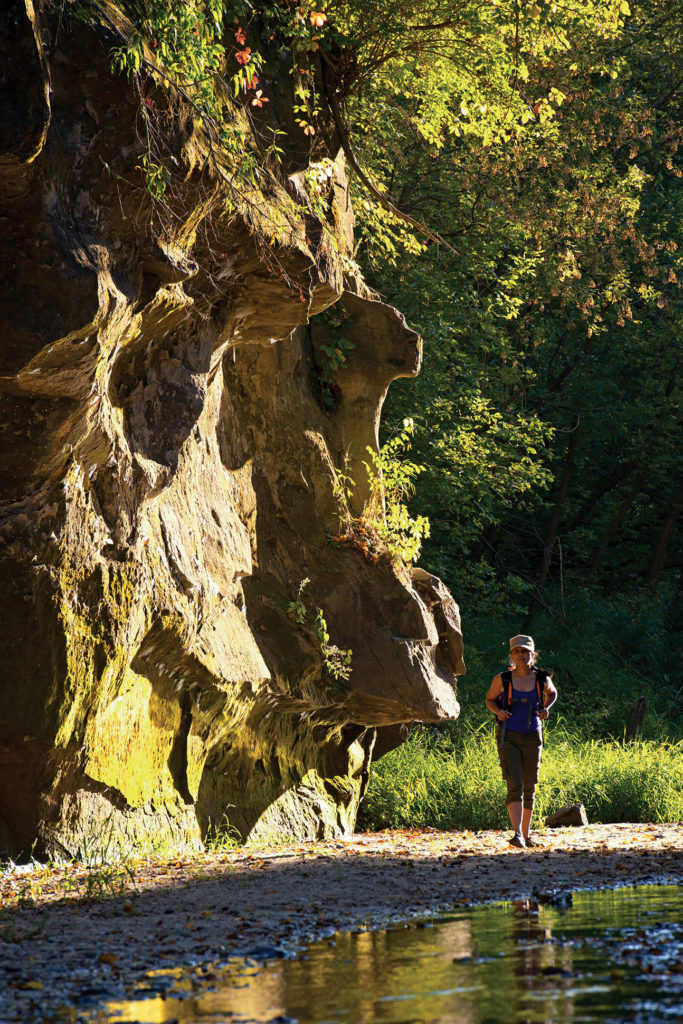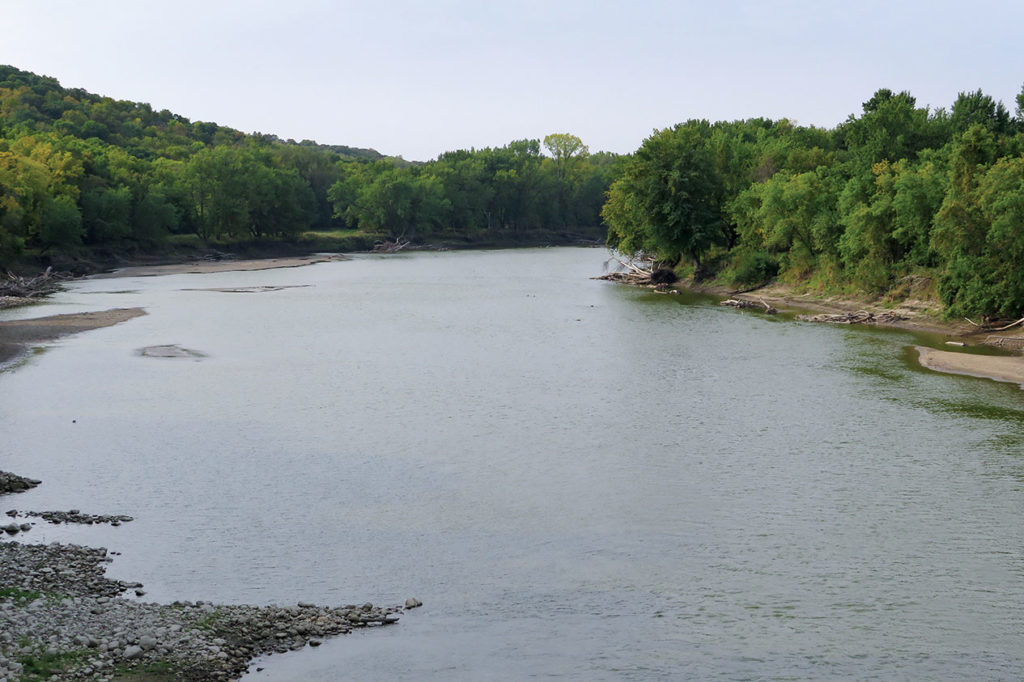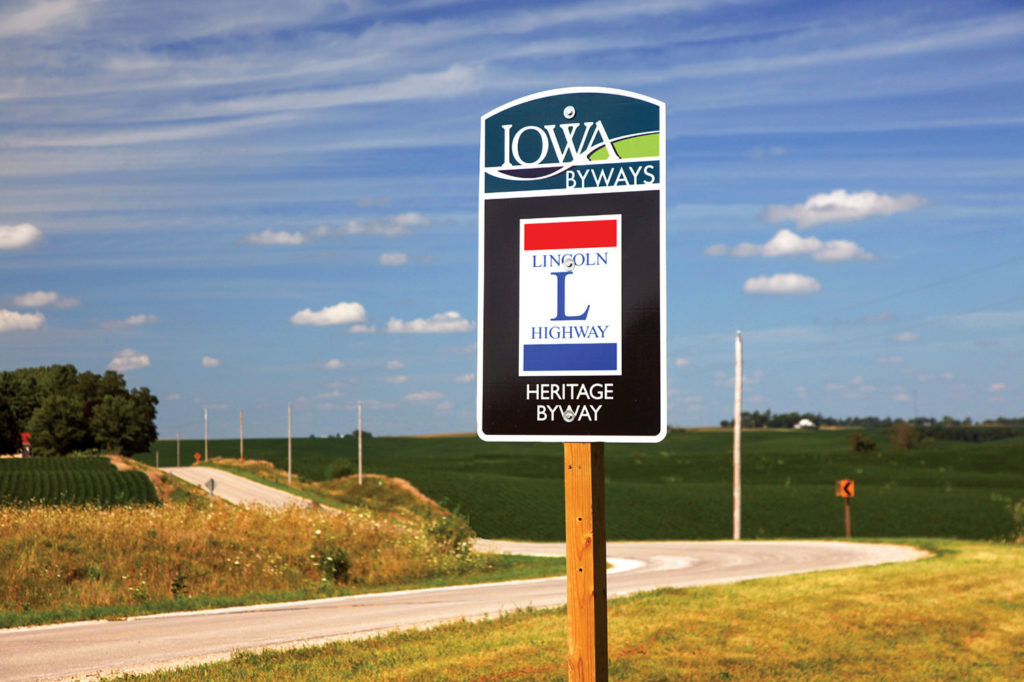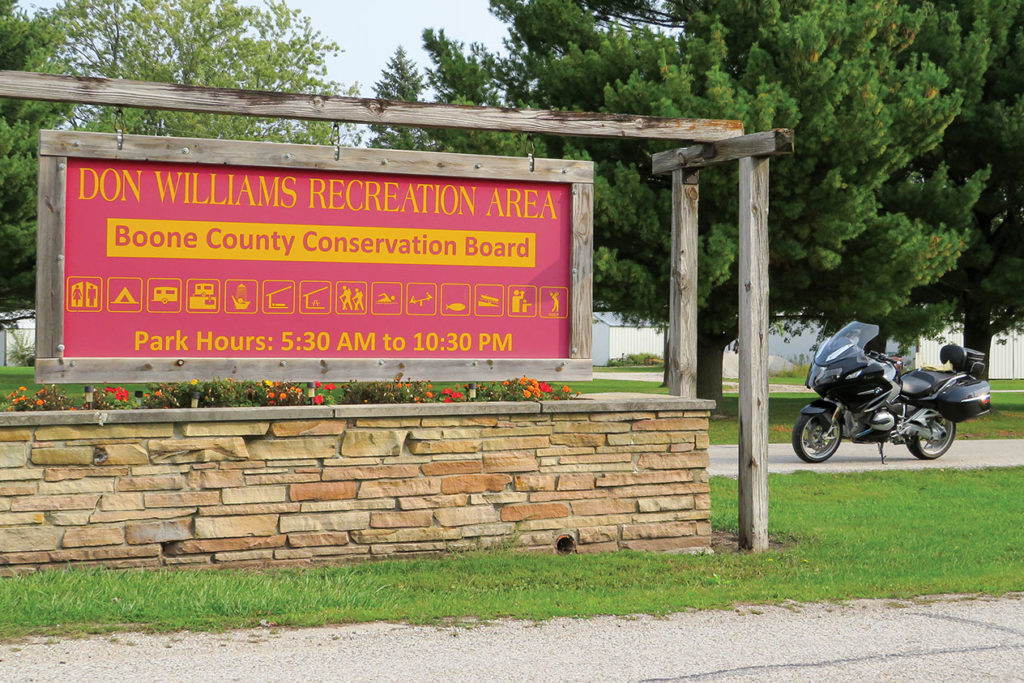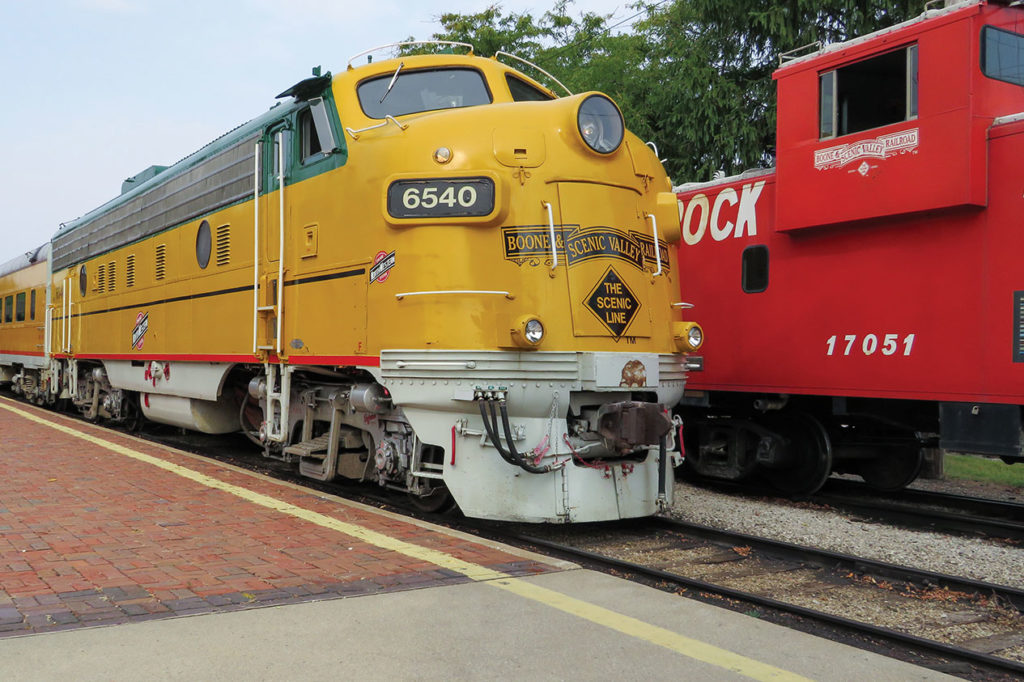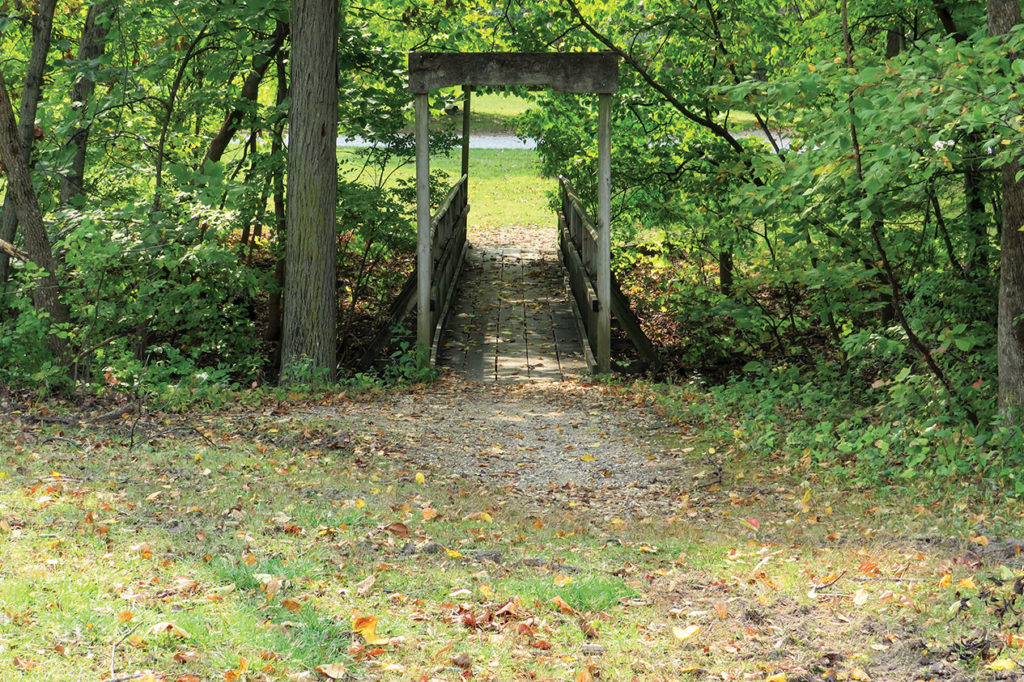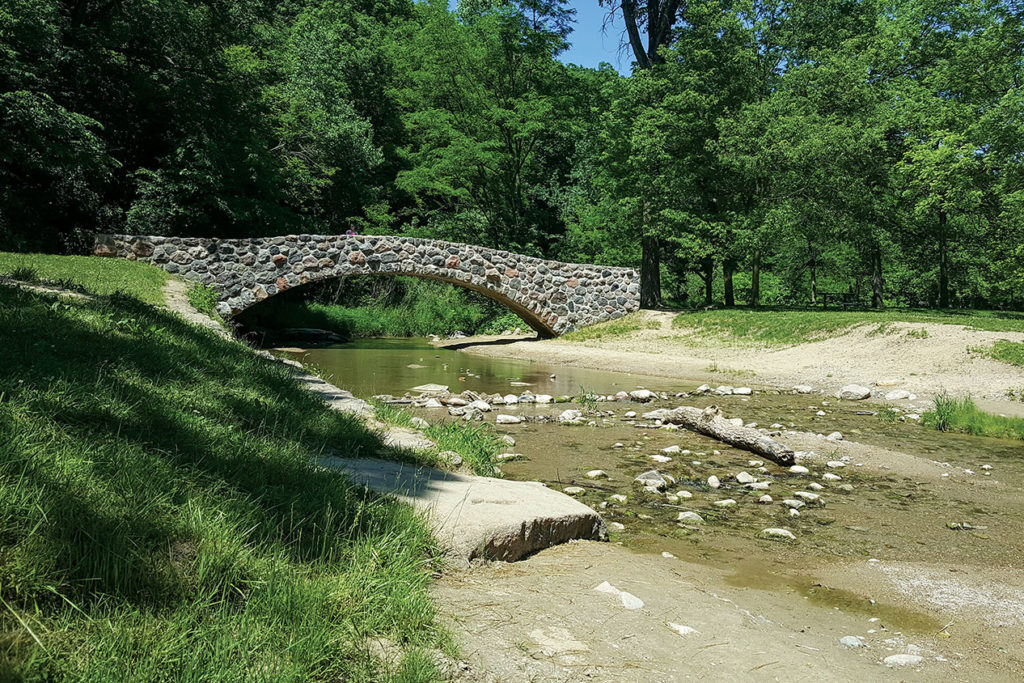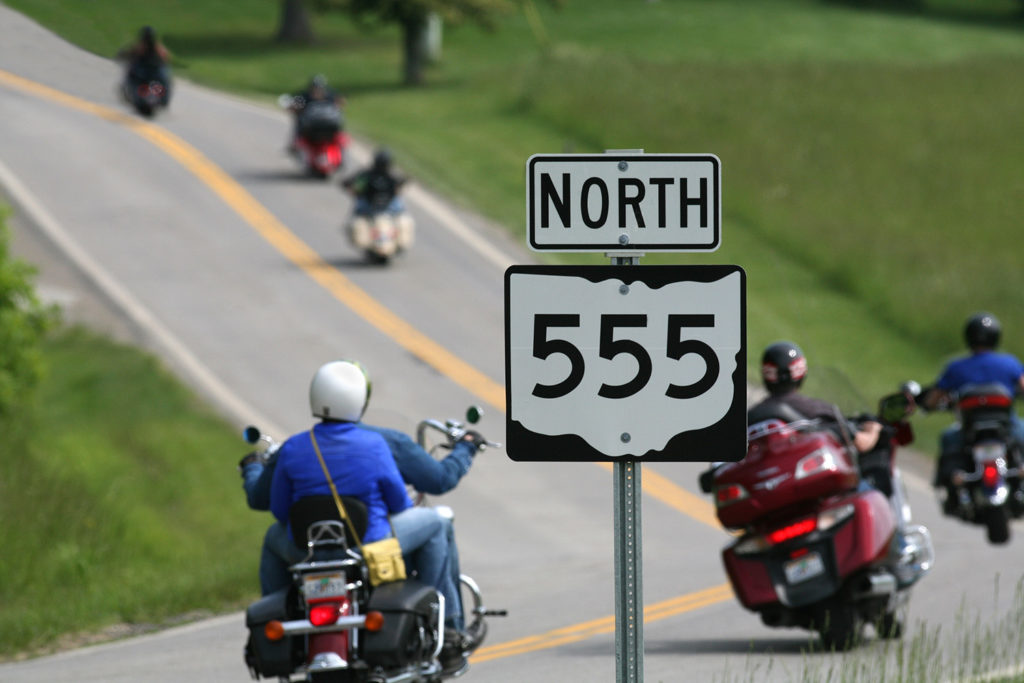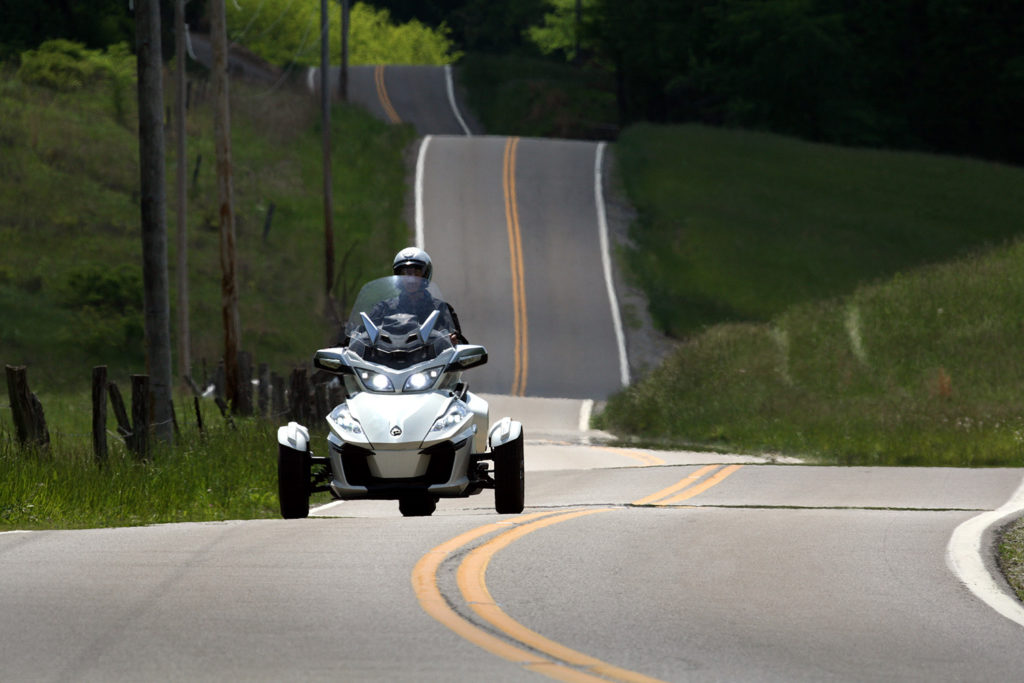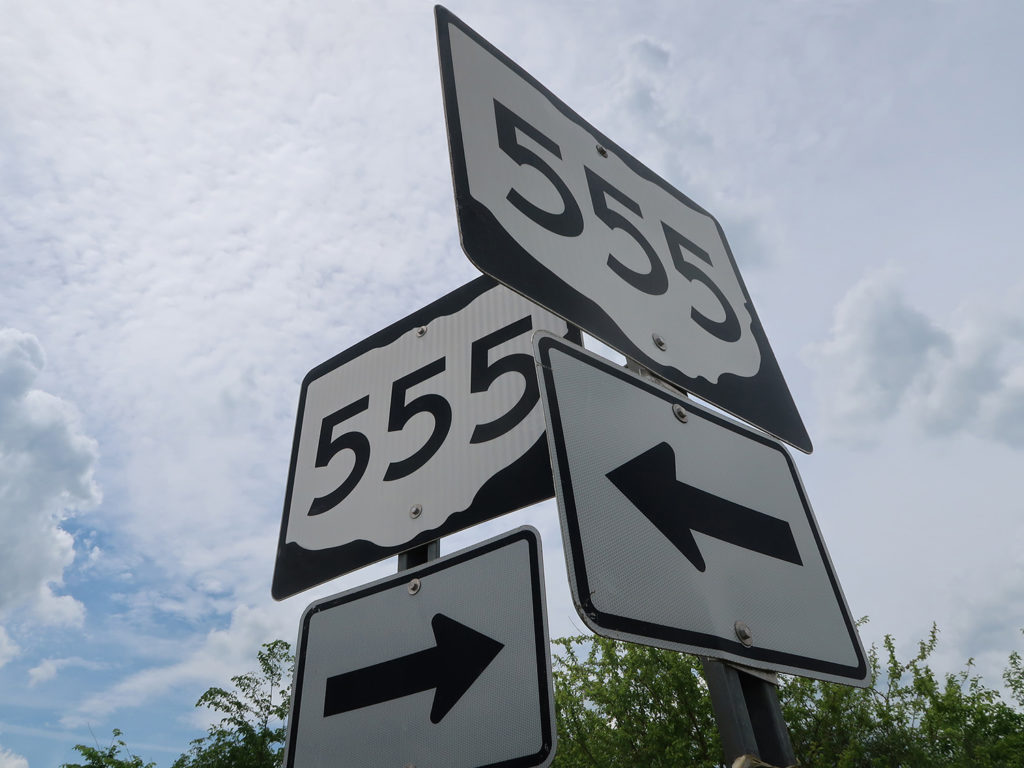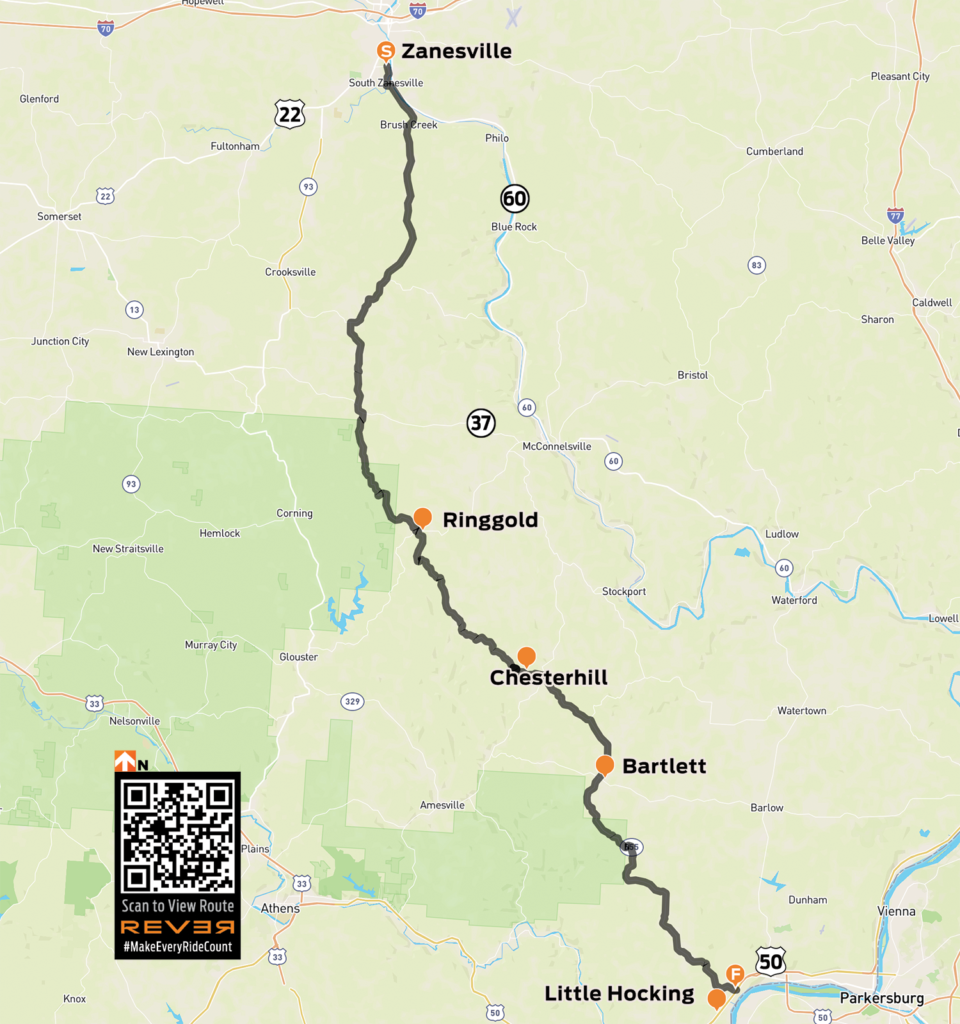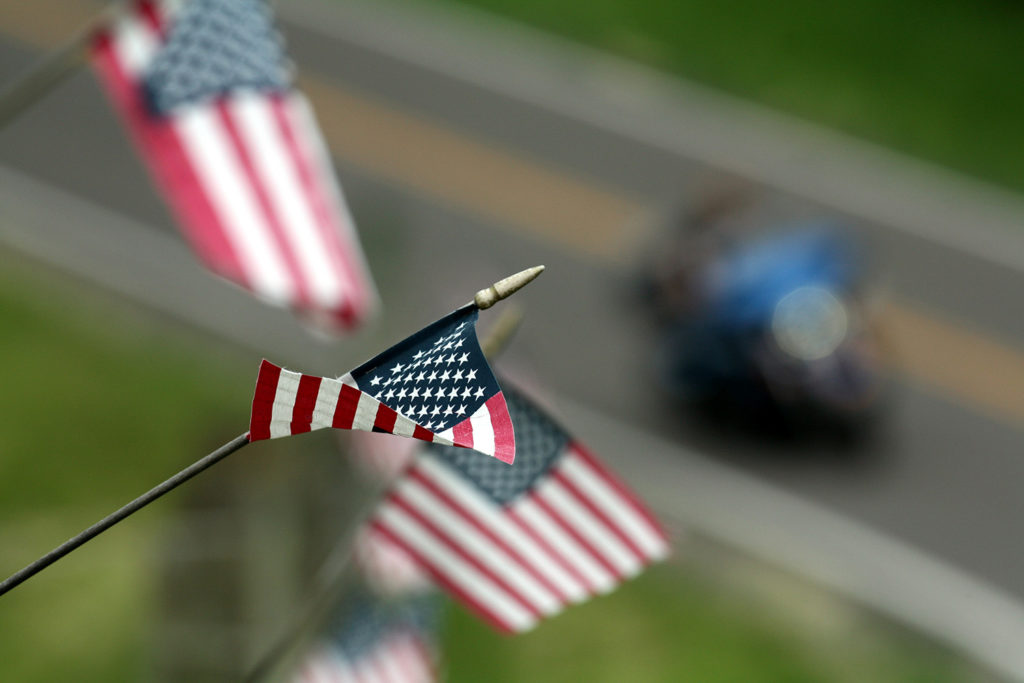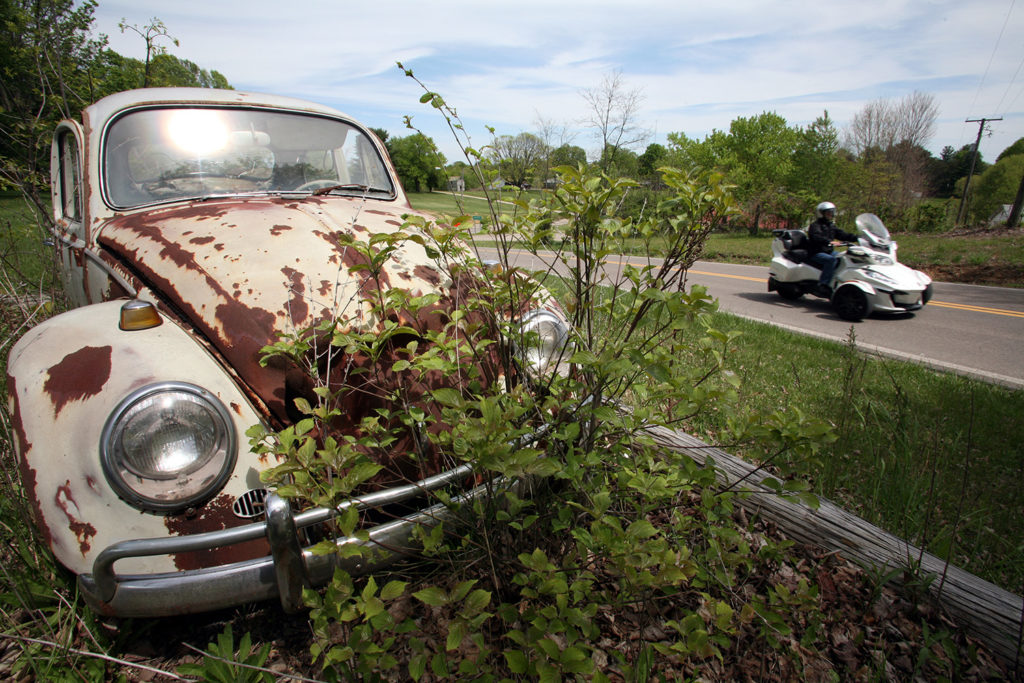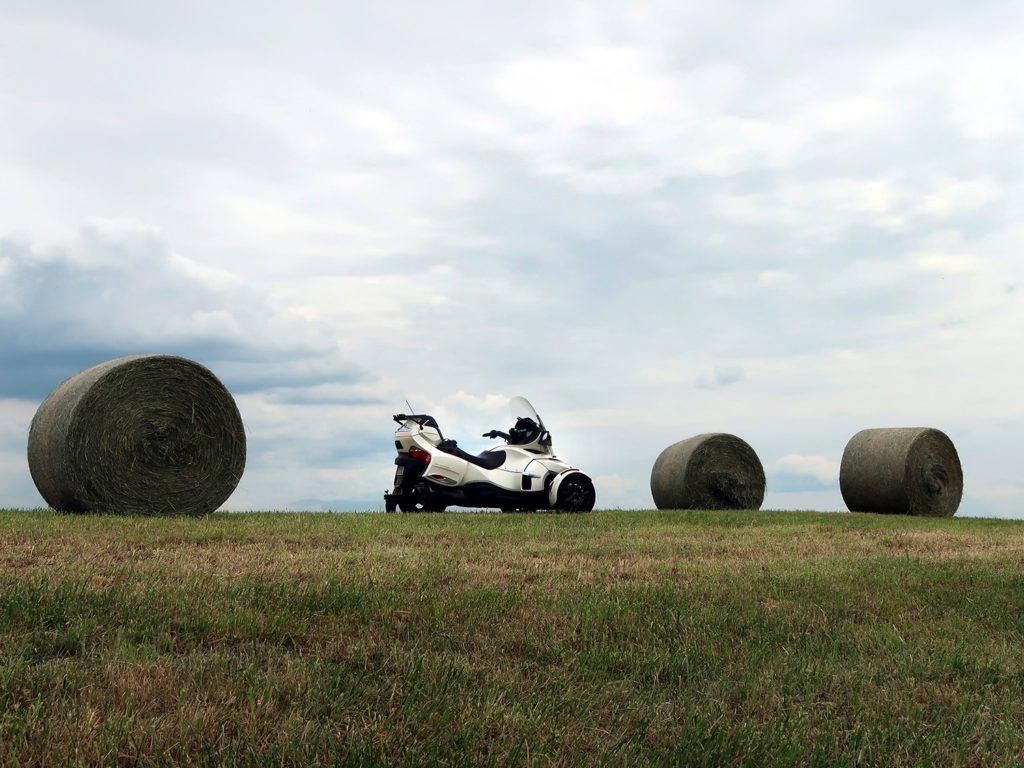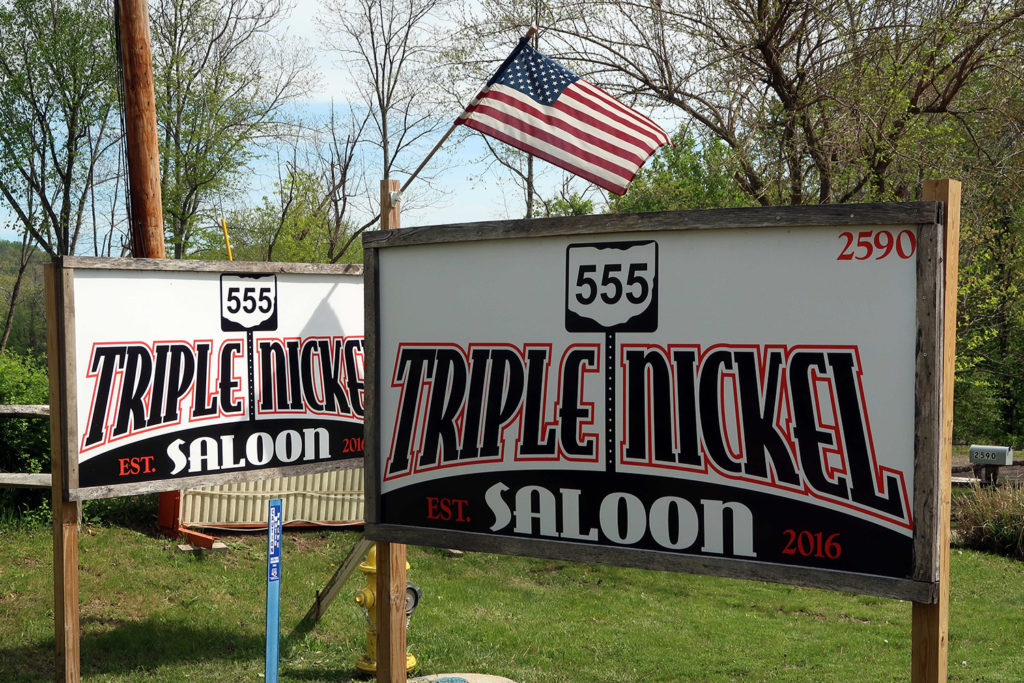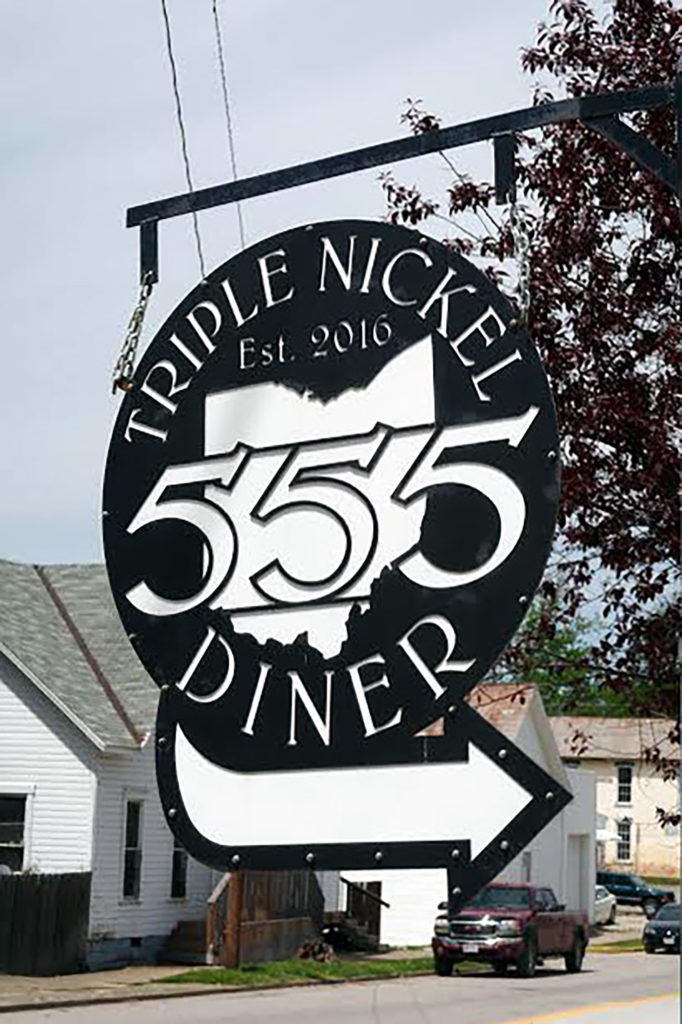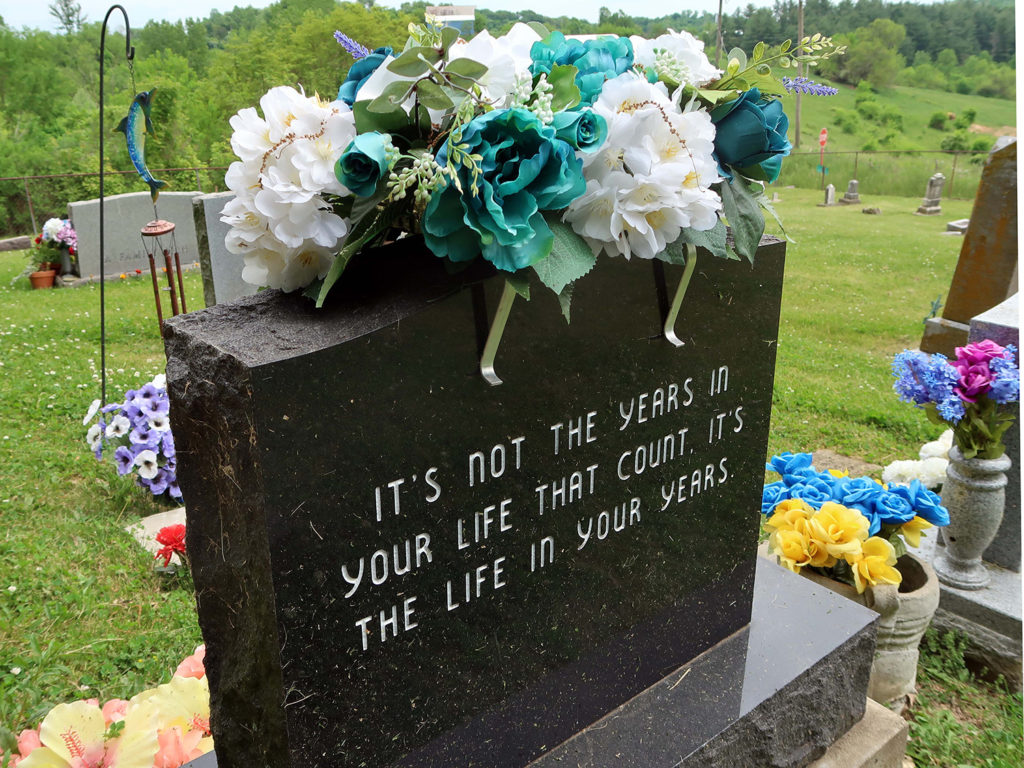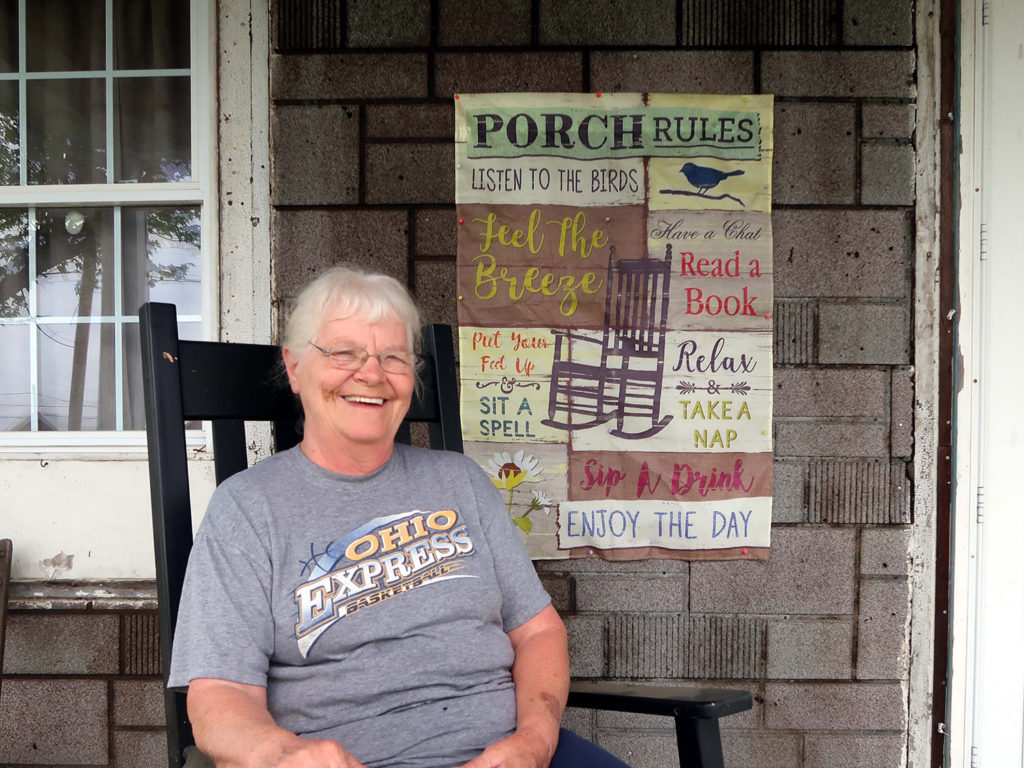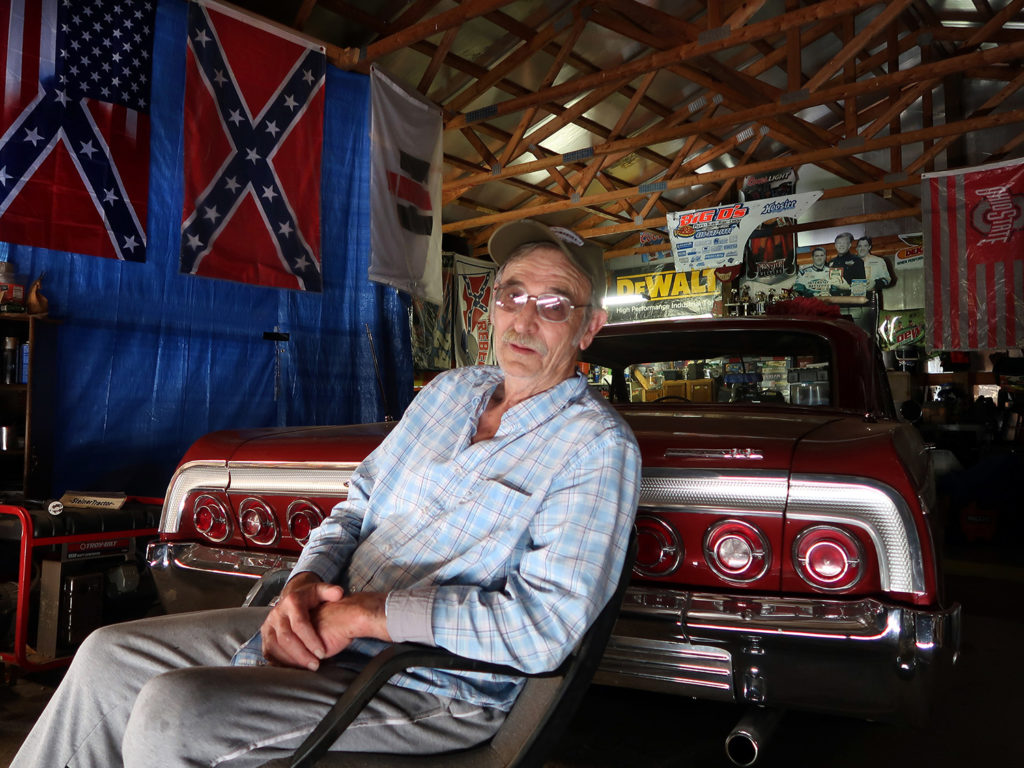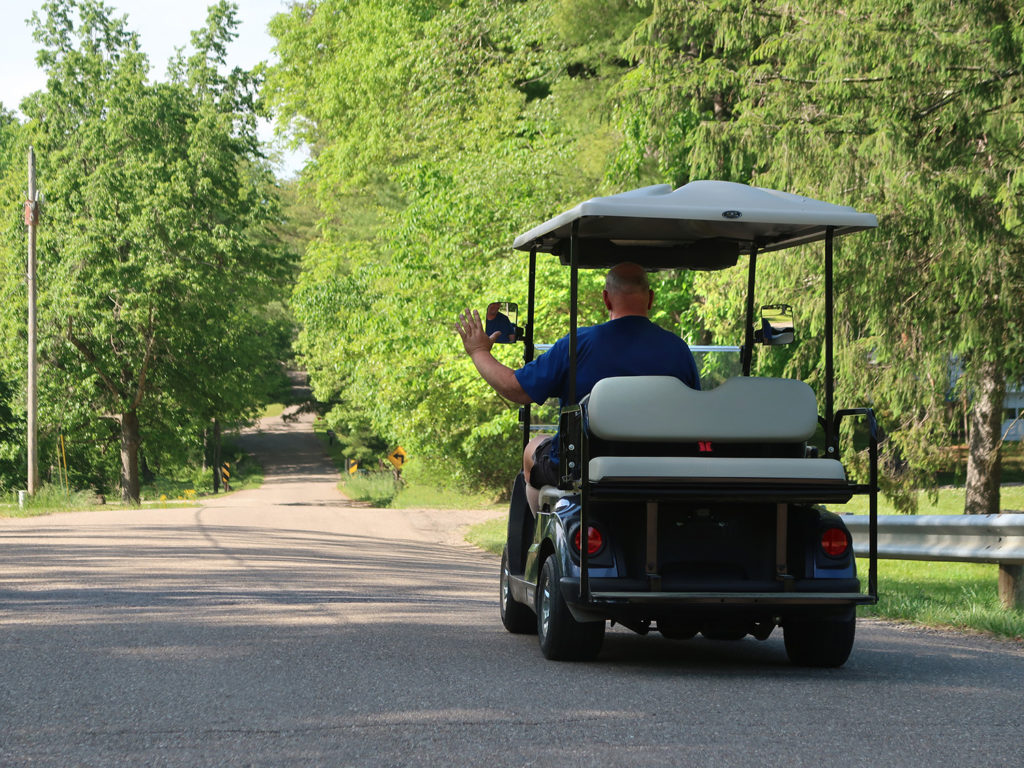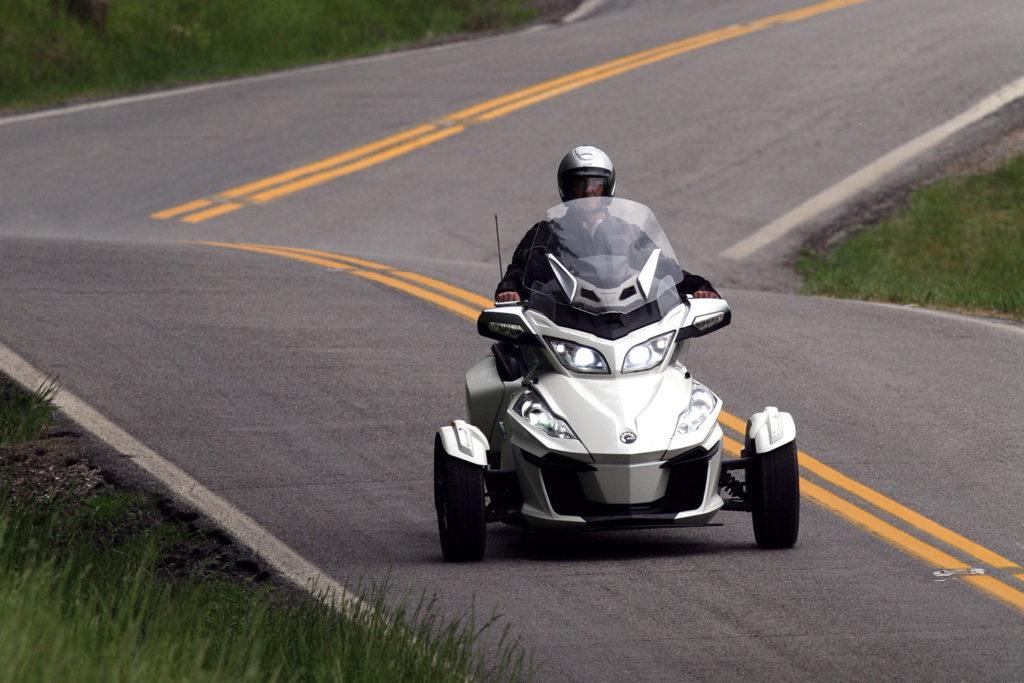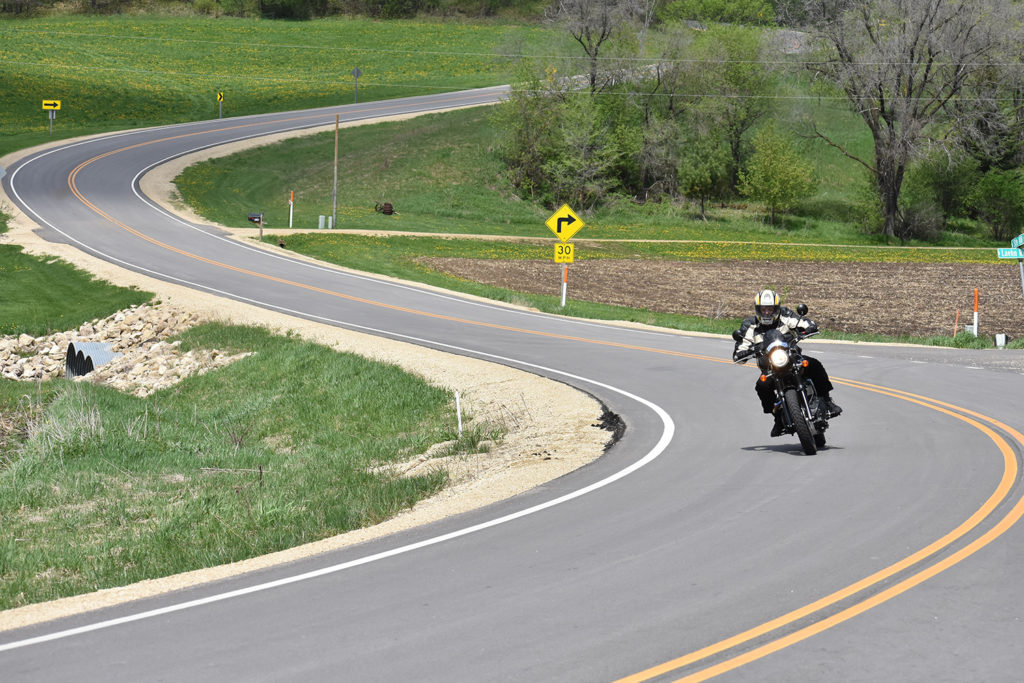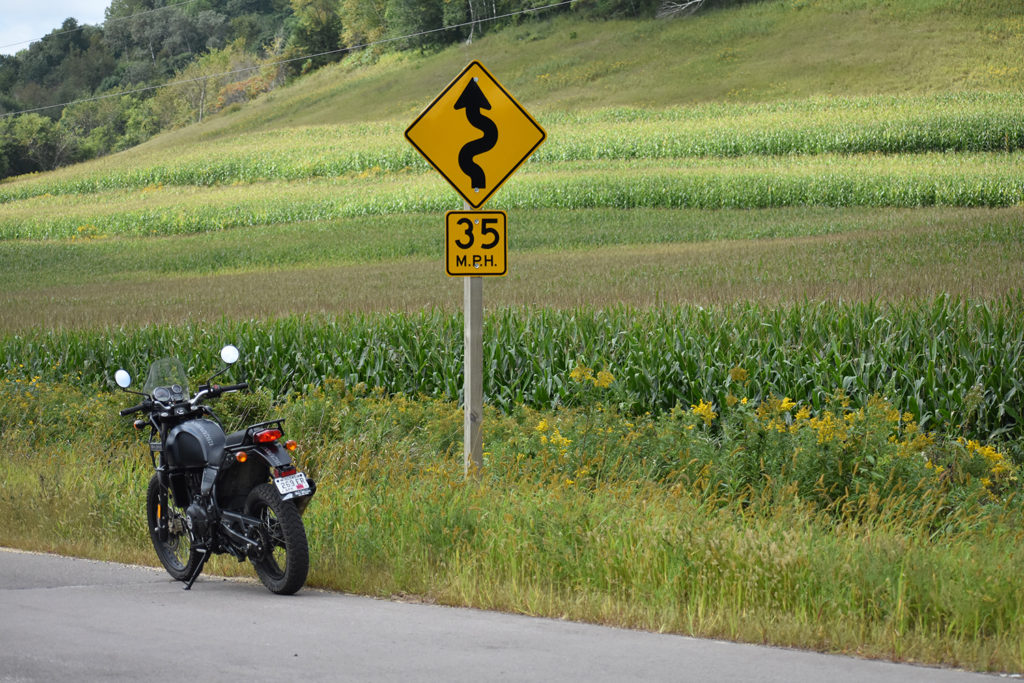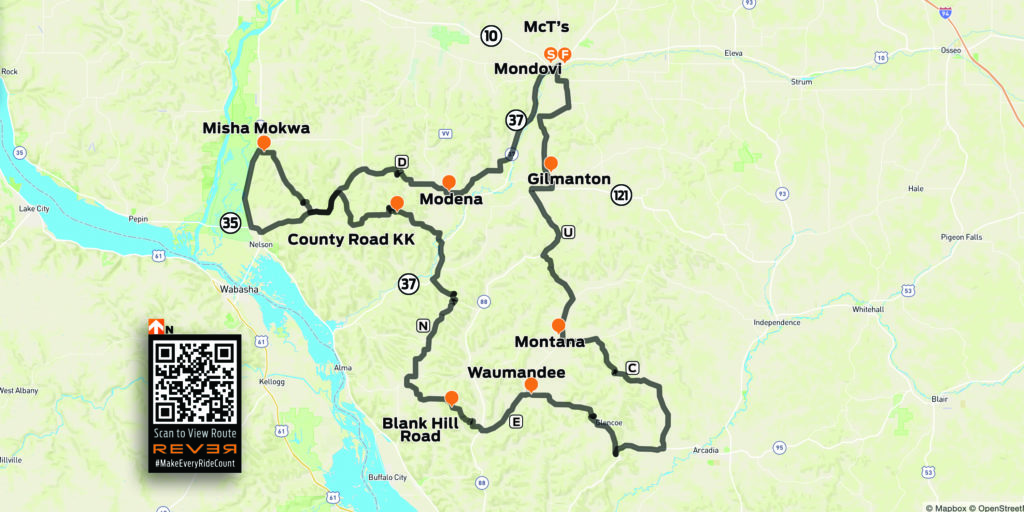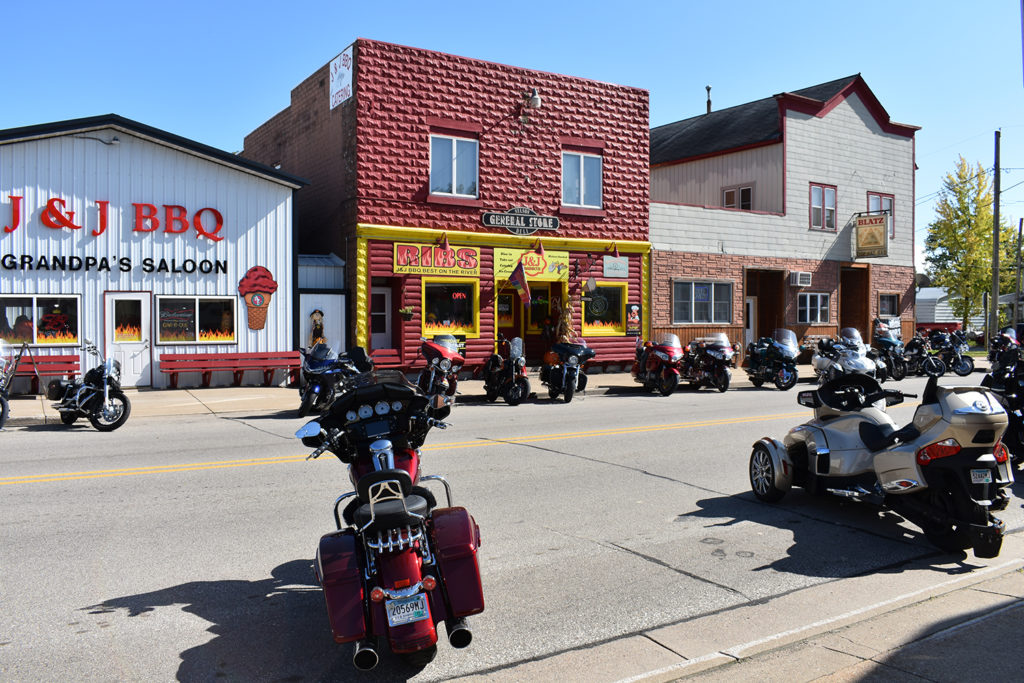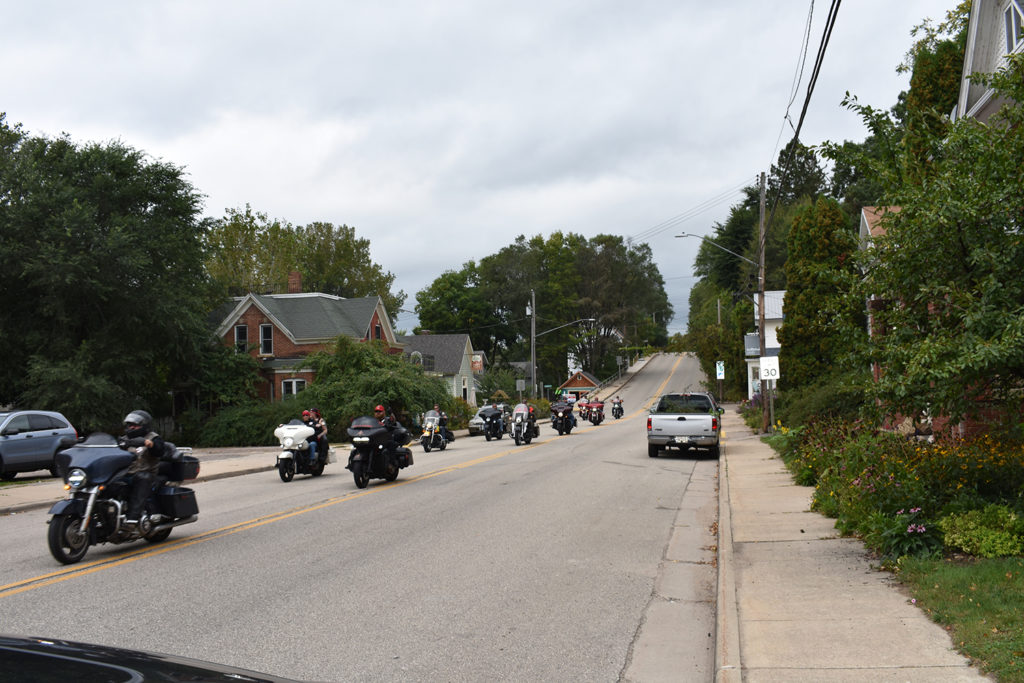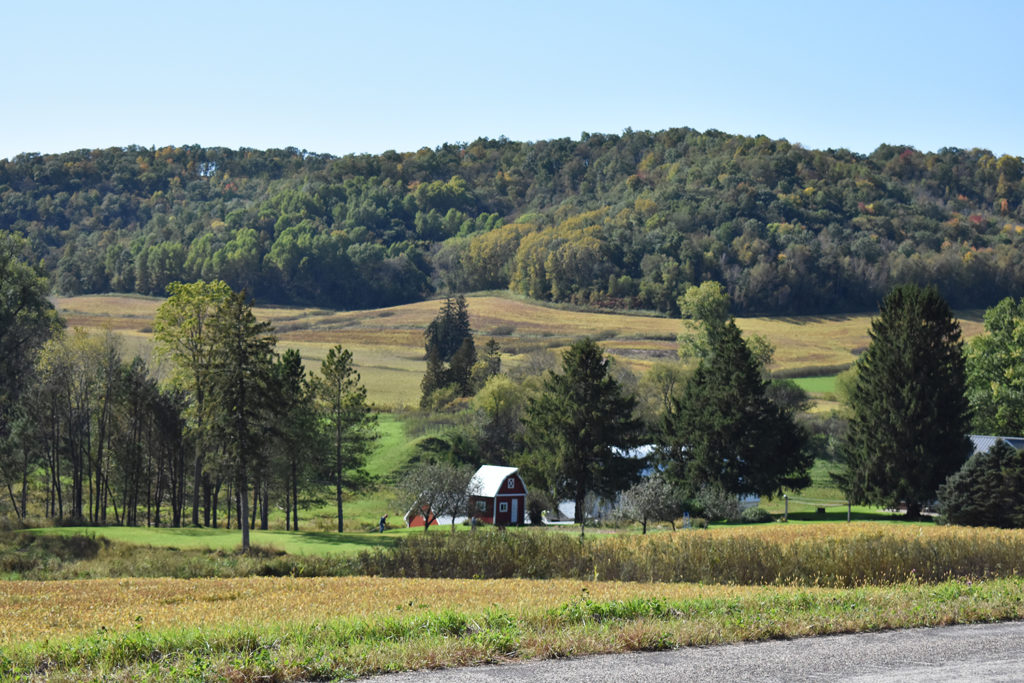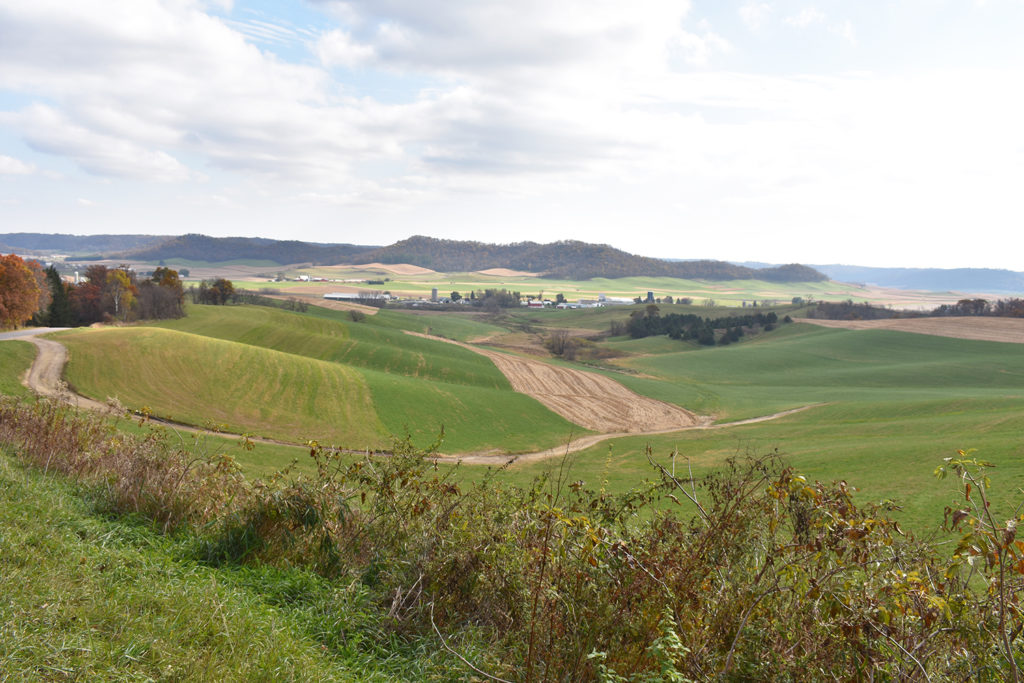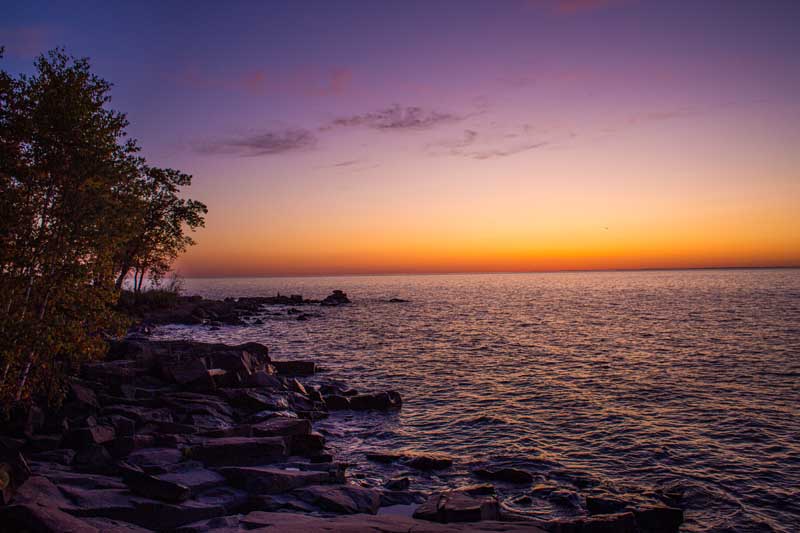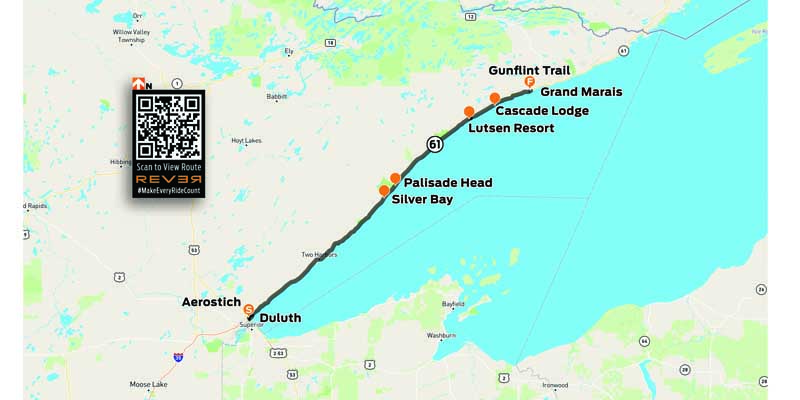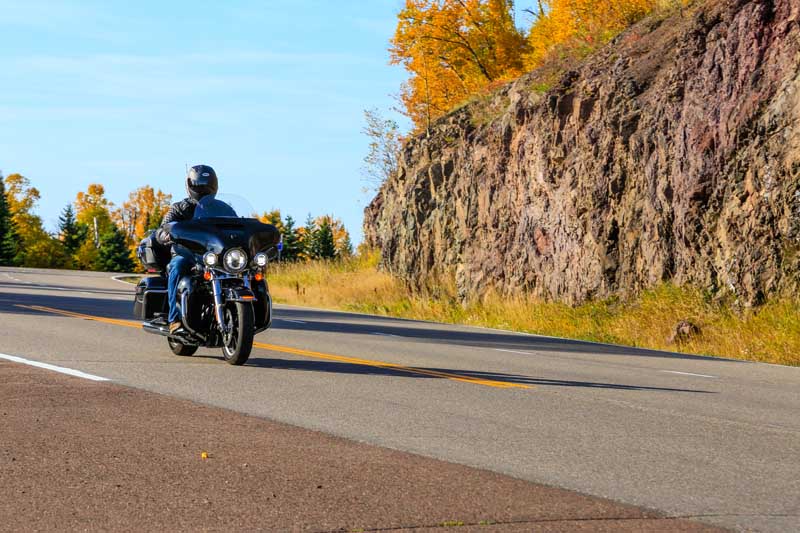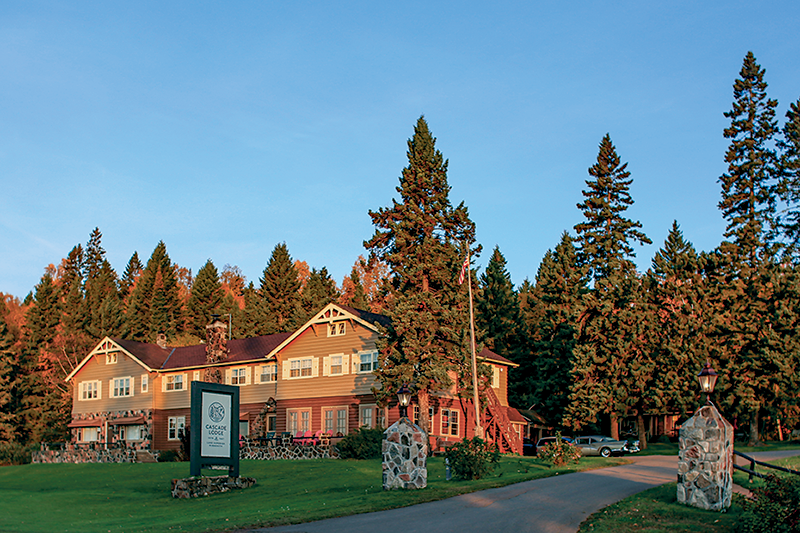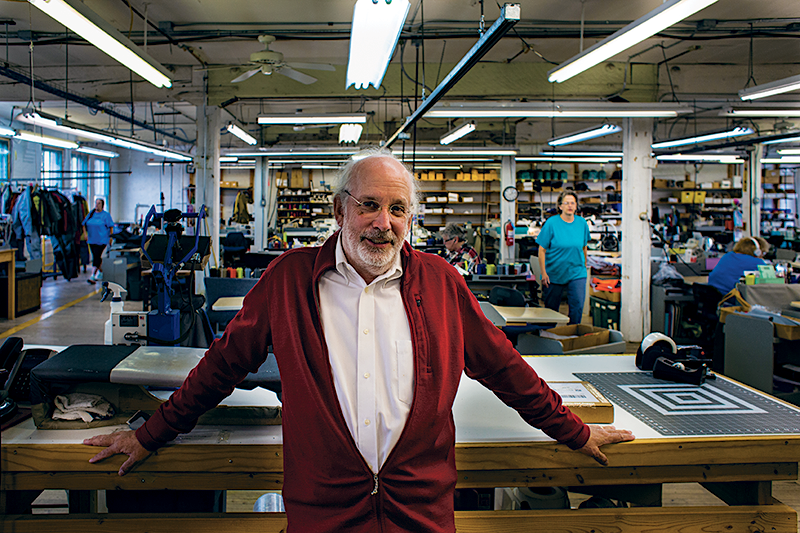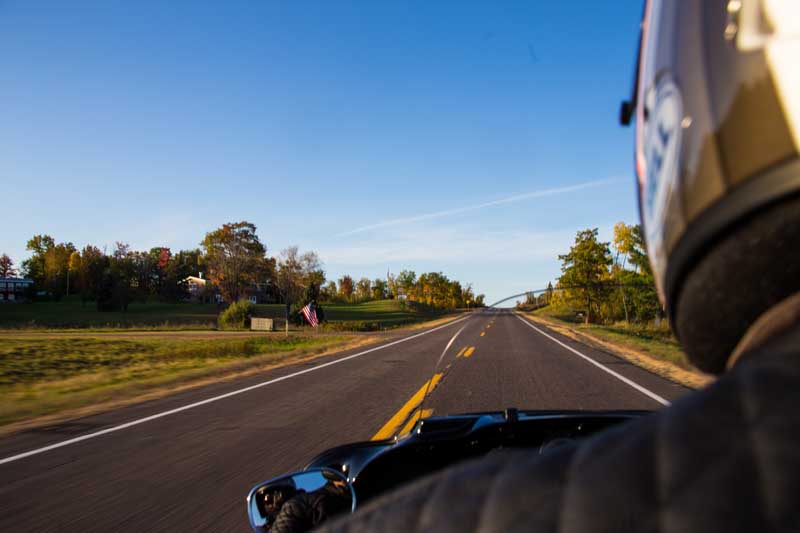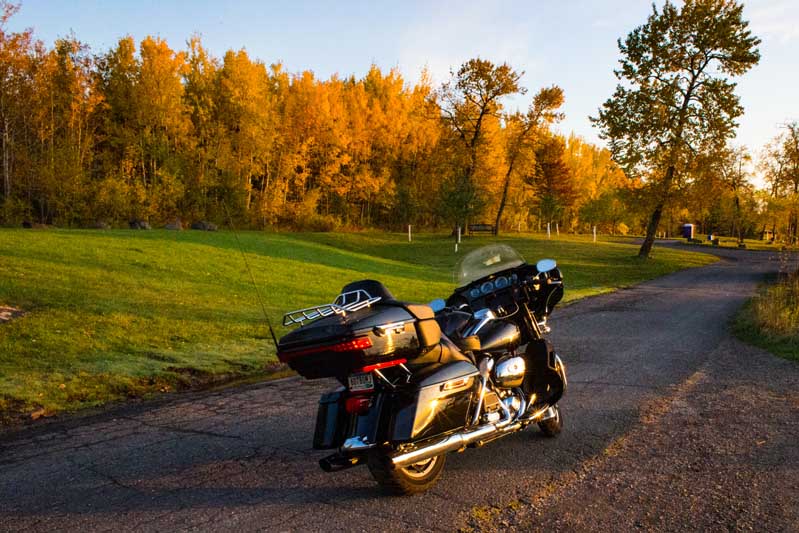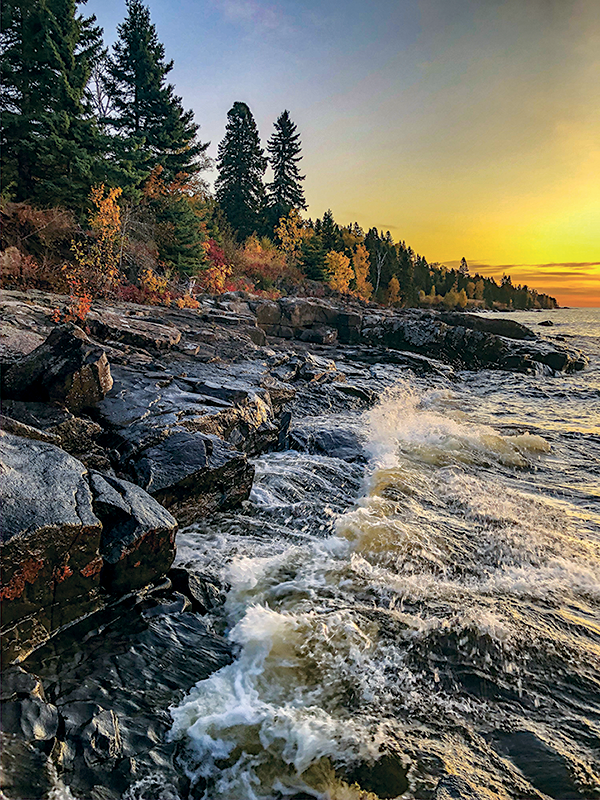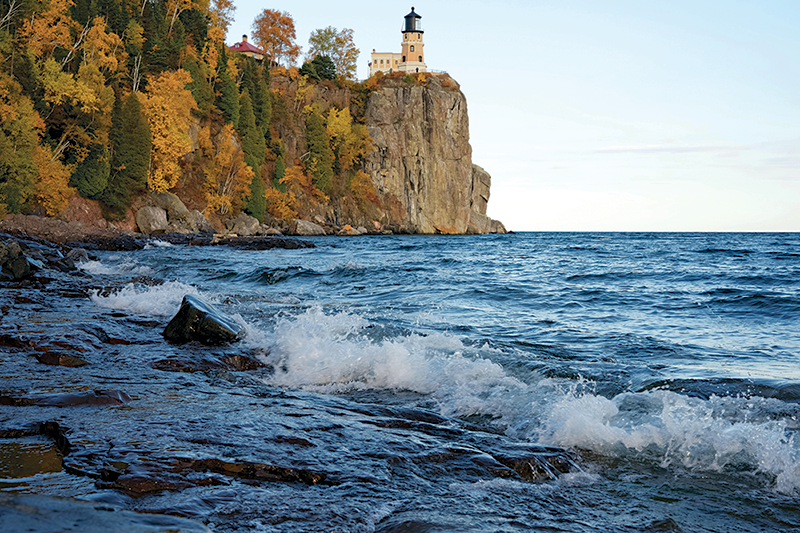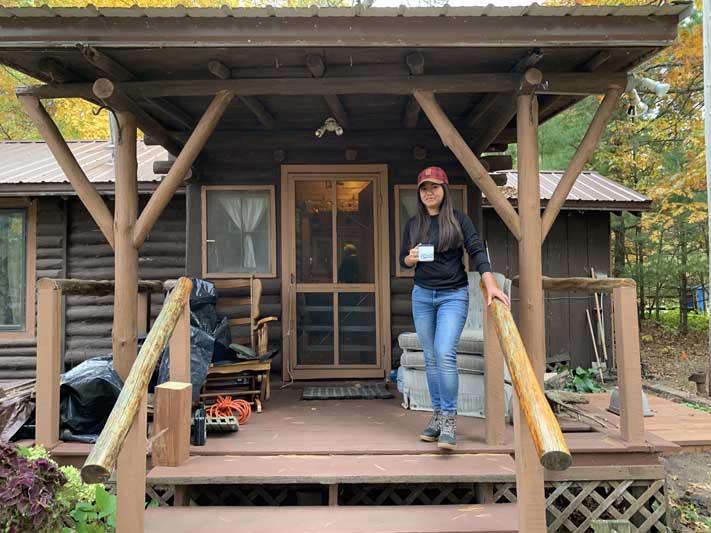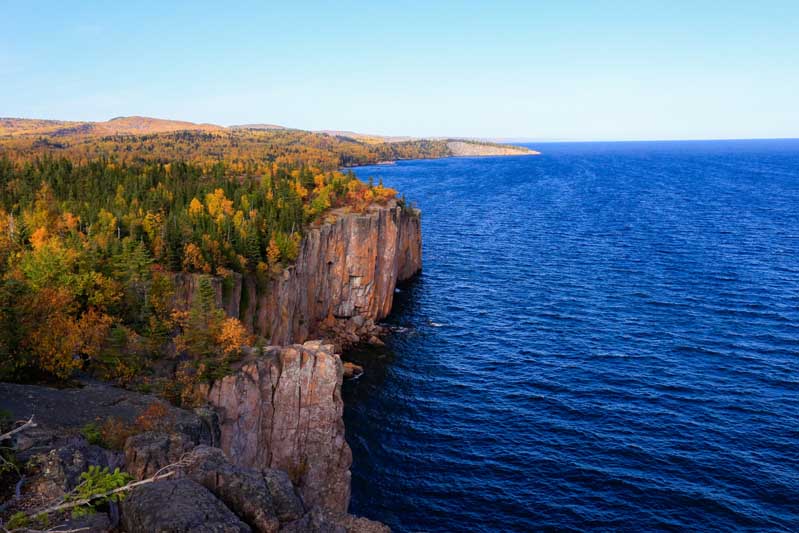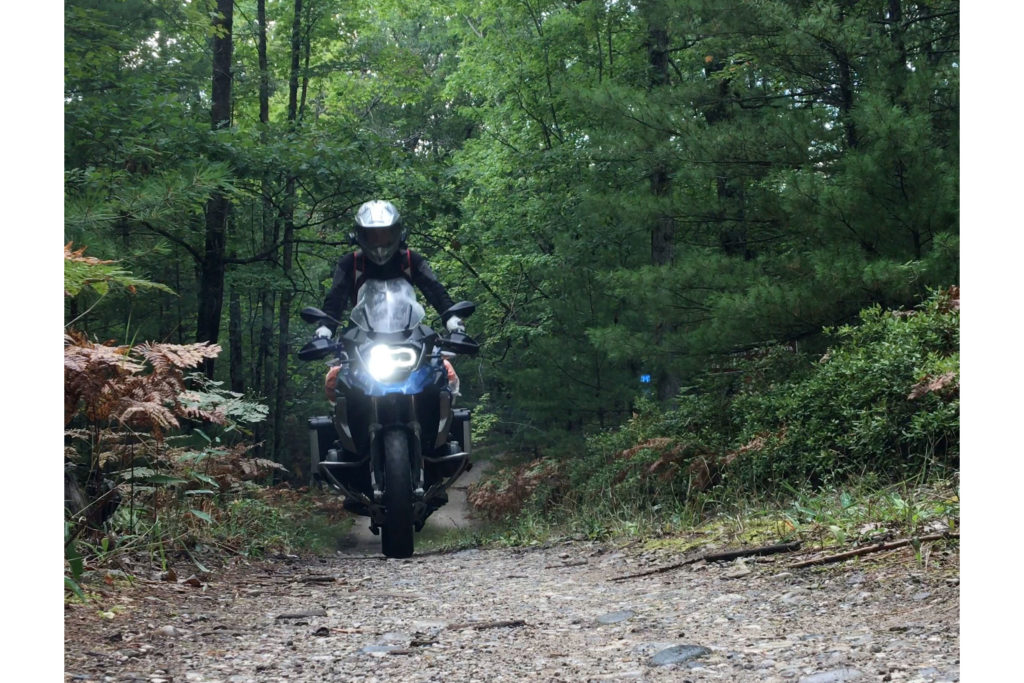
I arrive in Duluth, Minnesota, in the middle of the night, welcomed by a cleansing wind blowing off Lake Superior, the largest of the Great Lakes. The West had been ablaze for weeks when I’d departed California two days before, and smoke from those massive fires had gathered, unasked, across the Plains to form a thick, murky blanket. My eyes and throat are still burning as I hobble, ass whipped, from my BMW R 1200 GS to my waiting hotel room.
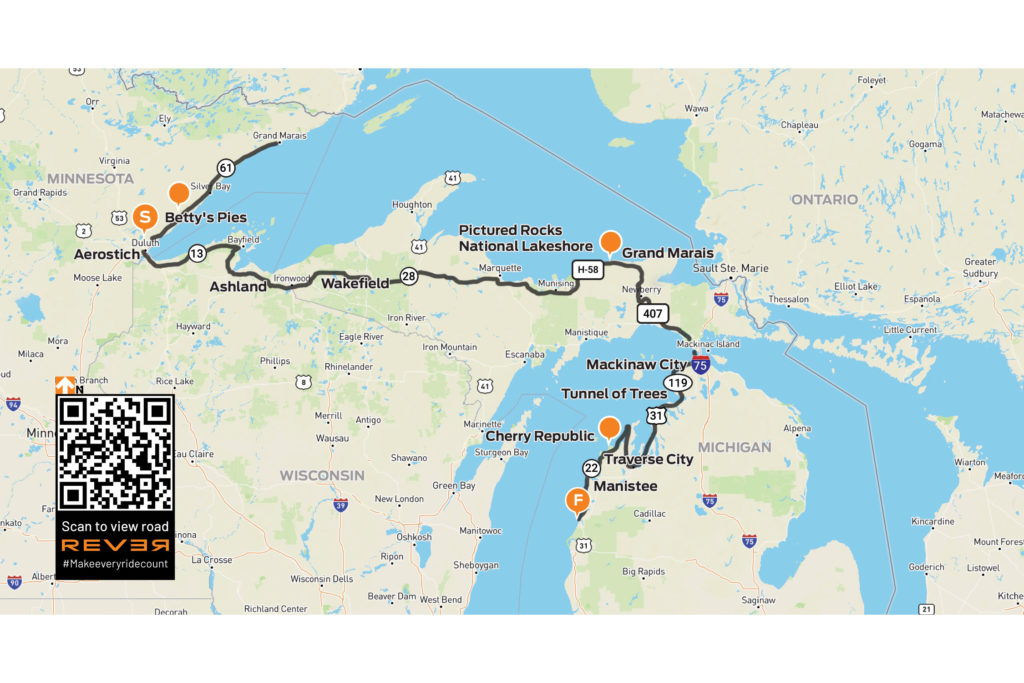
Scan QR code to view route on REVER, or click here
I’ve just started on a 6-week ride and my first official stop is a visit to the Aerostich factory to catch up with my old friend, Andy Goldfine. Andy and I go back to the mid-80s when we were starting in the motorcycle industry, him as the founder of Aerostich and me as an associate editor at Rider. I zipped up my first Roadcrafter the day we met and have since appreciated no gear – or friendship in the business – more.
Listen to our interview with Andy Goldfine on the Rider Magazine Insider Podcast
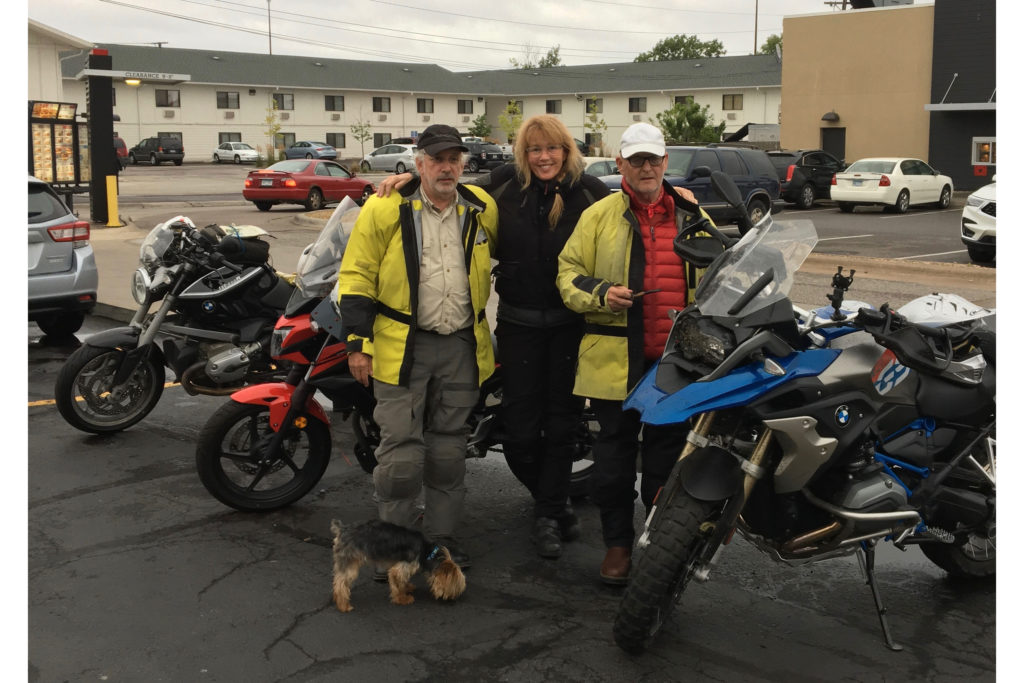
Duluth has always charmed me with its terraced streets and historic port town vibe. Spending a day off the bike here is a joy. I’m able to hang out at Aerostich and watch as suits are cut and stitched. Some would call this a factory, but it’s much more like a workshop where skilled technicians craft riding apparel.
After enjoying a classic biker breakfast the next morning at the Duluth Grill with Andy and his “most curmudgeonly riding friend” John Grinsel, an 80-something-year-old character who rides up to 20,000 miles each year with a pipe in his mouth and a tiny pup named Moose poking out of his top box, I’m back in the saddle of the GS heading north around the edge of the world’s largest freshwater lake.
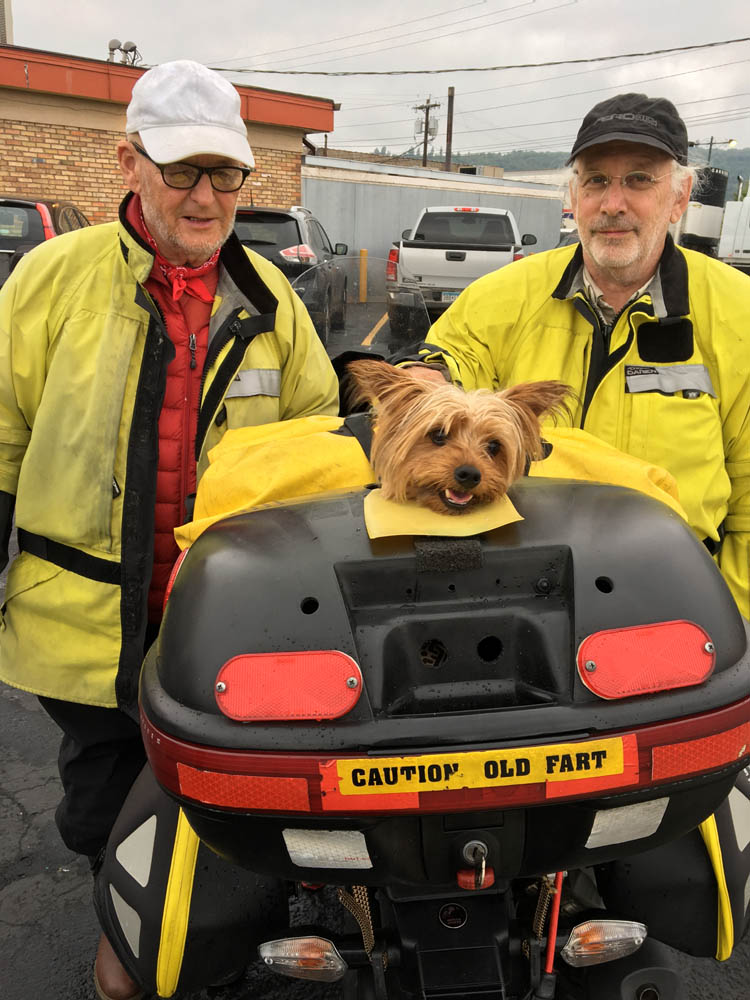
The Greatest Lake
Behaving more like an inland sea than a lake, Superior is massive, holding 10% of the world’s fresh surface water. It and the other Great Lakes to the east are so dynamic they create their own weather patterns. Today, I’m riding through a Scotch mist I’m not sure I can blame on the lake, and it’s giving my finger squeegee a workout.
I’m riding a loaner R 1200 GS Rallye edition I’ve had for seven months. I’ll never get enough of the GS bikes, and over three decades I’ve used them to explore five continents. Having been one of BMW’s flagship models for four decades, the “big” GS was legitimately the first travel bike to be truly versatile, but what I find most endearing is the way the chatty boxer Twin feels like an old friend every time I fire one up. It’s a pleasant bike to ride anywhere, including roads like Minnesota’s super scenic State Route 61 along the North Shore.
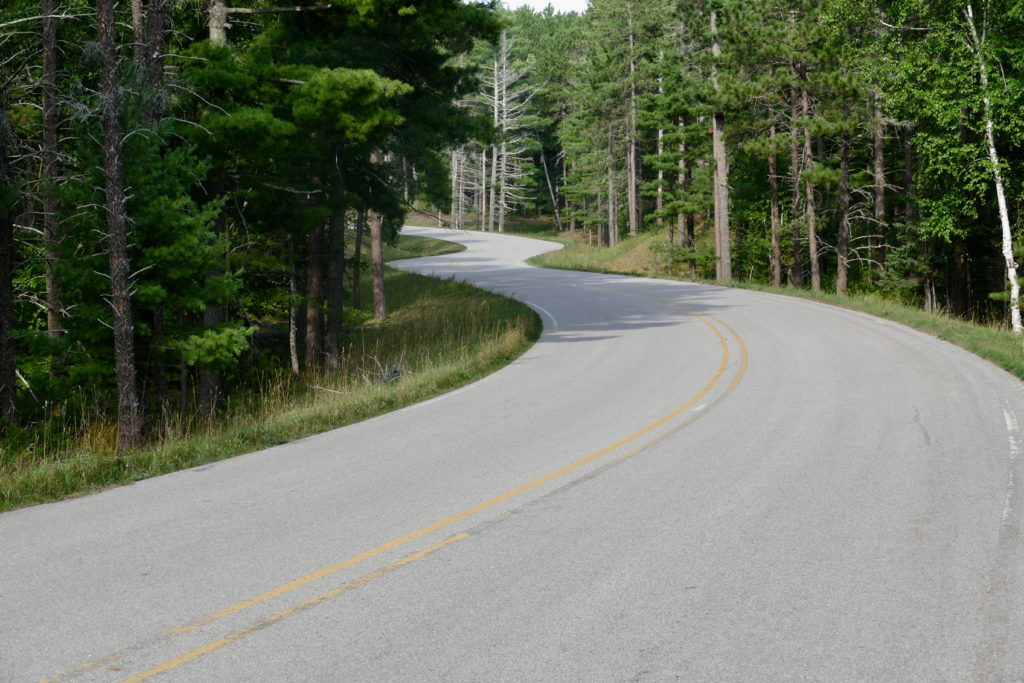
By the time I reach Grand Marais, it’s clearly storming hard to the north, and I retreat back down the highway, ducking into the famous Betty’s Pies for a slice and a coffee. I love this place, and if I weren’t on a bike, in the rain, I’d take an entire 5 Layer Chocolate Cream Pie to go.
Early the next morning, the sun is out and I’m in Wisconsin exploring the bottom edge of Superior. While I’d traveled to the top of the lake a few years back, the southern section was a mystery. I throttle the GS up Wisconsin’s Lake Superior Scenic Byway, State Route 13, connecting fishing villages to waterfalls to sandy beaches and orchards.
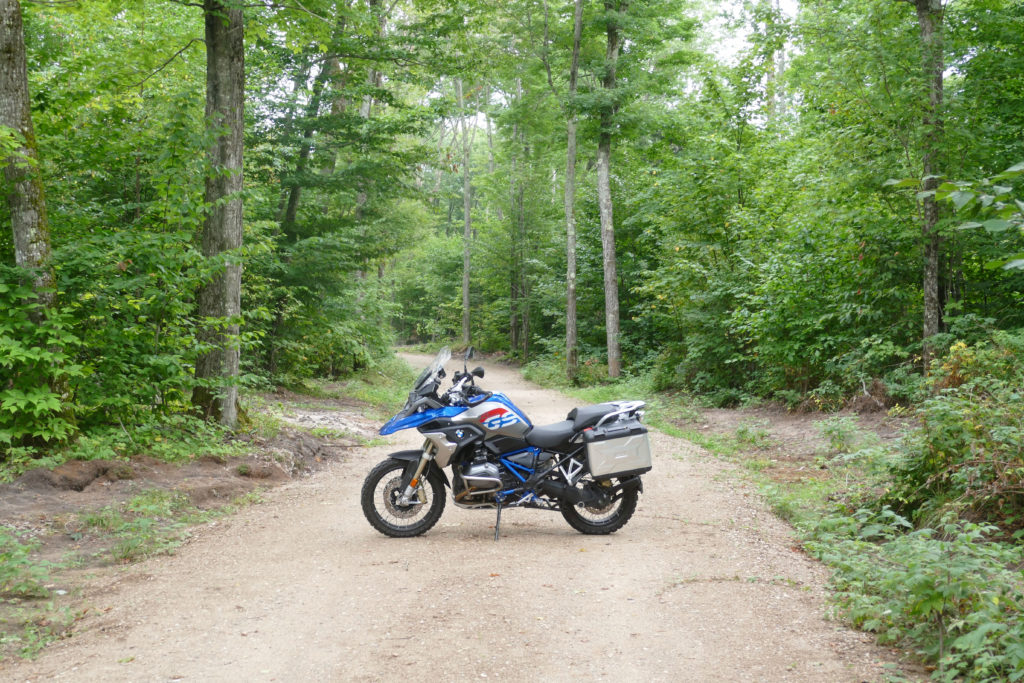
The Road to Pictured Rocks
I want to shoot up Michigan’s Keweenaw Peninsula to Copper Harbor on U.S. Route 41, and not just because the road looks amazing on the map. I’ve heard there are monks who bake delicious treats and sell preserves they make from local fruit at The Jampot bakery. But I’m short on time and even shorter on tires. The Continental TKC80s I opted for seven months back now have more than 6,500 miles on them and my replacements are waiting at a dealership 700 miles away, which means limiting side trips.
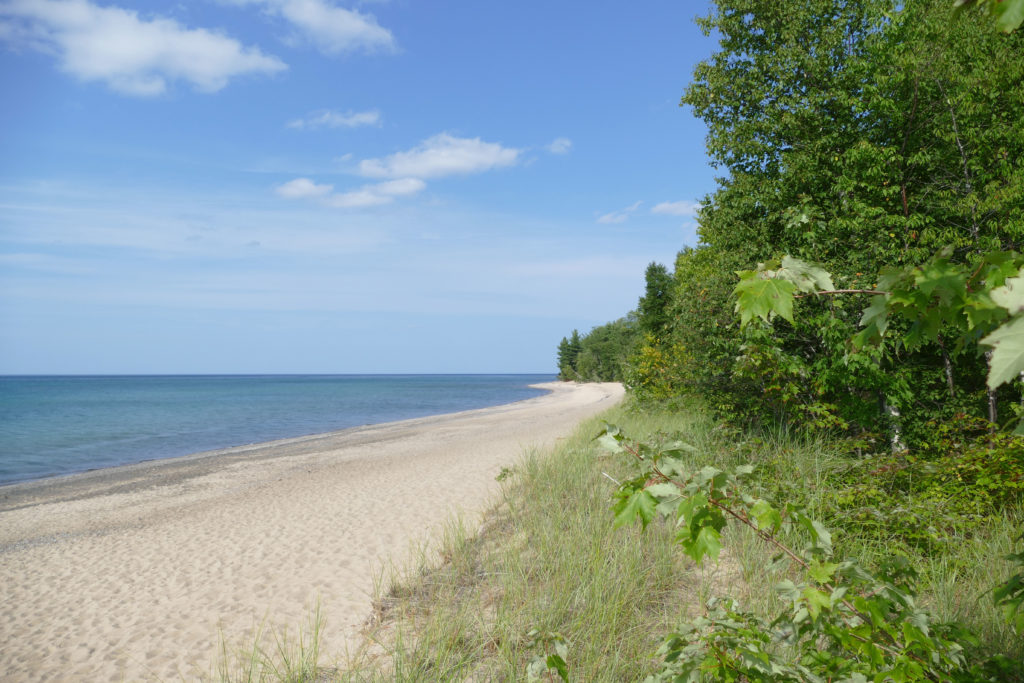
So, I head from Ashland, Wisconsin, straight for Pictured Rocks National Lakeshore on the recommendation to ride County Road H-58. And wow, what a sweet road. I hear it was even more fun to ride before it was fully paved in 2010, but today the 69 miles of smooth shaded corners and flowing undulations ride like a song. And for the other senses? The beautiful lake up here is edged by colorful sandstone cliffs and unspoiled sandy coves.
When you’re on an adventure bike, another thing to love about Michigan is its more than 3,100 miles of off-road vehicle trails, proudly documented and promoted on the state government’s website, and on Pure Michigan, a site sponsored by Michigan’s lead economic development agency. How civilized for these Midwestern states to celebrate their off-roading opportunities instead of quashing them.
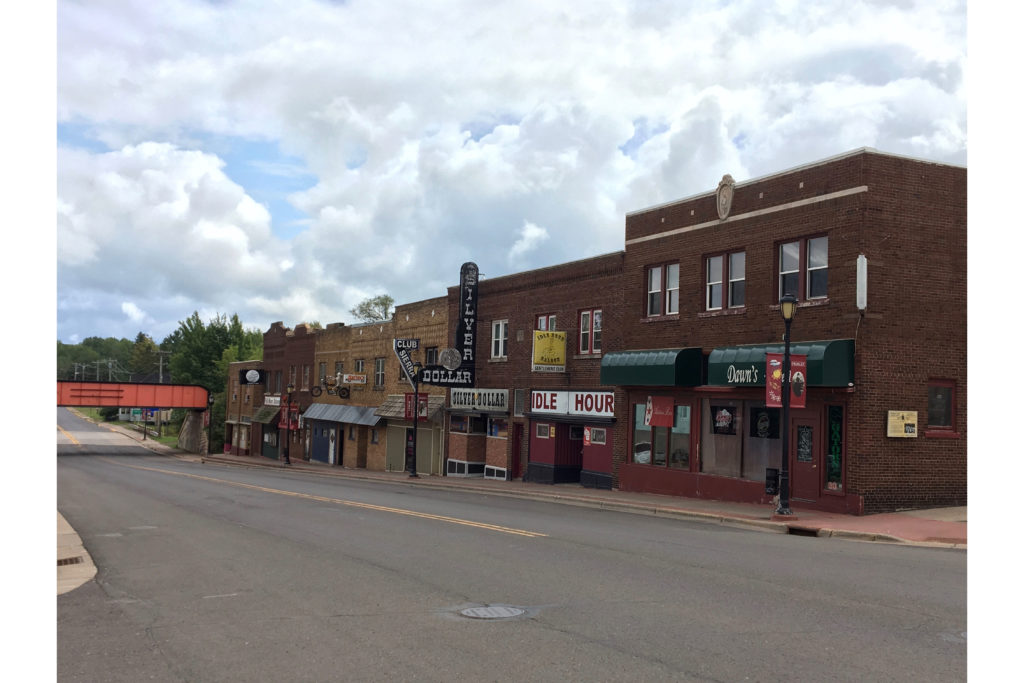
But you hardly need a map to find a tempting two-track here, which is the reason I’m not making good time on Michigan’s Upper Peninsula, but finally I’m at the famous Mackinac Bridge, gearing up to ride its five swaying miles to the Lower Peninsula. Yup, Big Mac is one of the longest suspension bridges in the world and it’s built to swing (apparently, up to 35 feet at its center span), and on a windy day, you can feel it, as I did when I crossed it years back on a Harley Ultra Glide Classic.
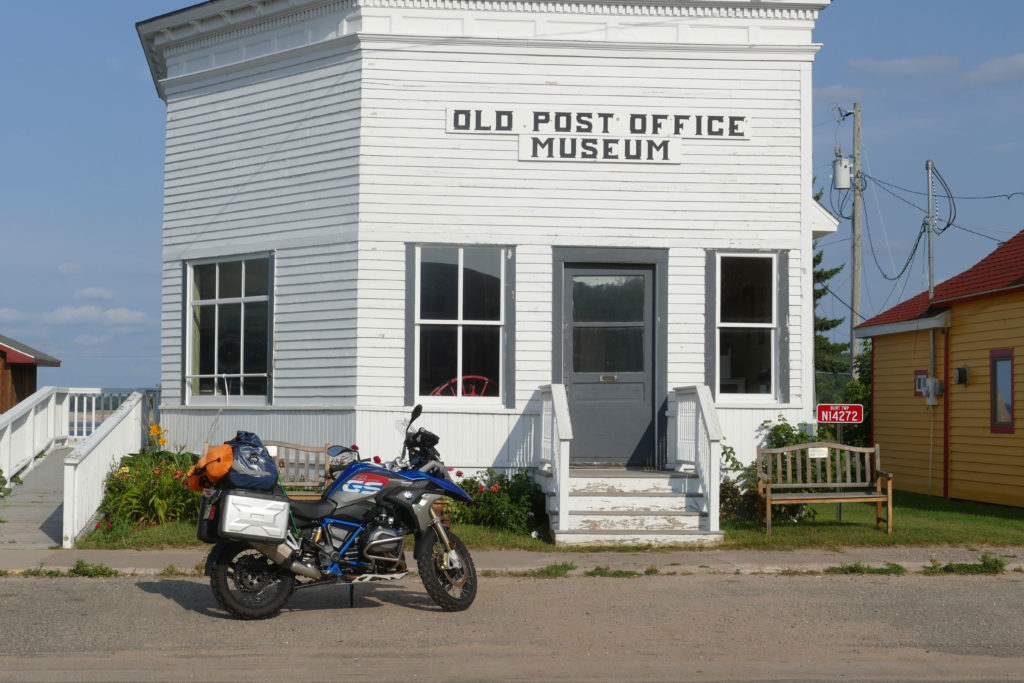
Especially in Michigan
But today it’s only breezy, and purring across the impressive bridge on the GS is a joy. I don’t have time to stop in touristy Mackinaw City because I want to ride some small roads I’d missed on my last trip, starting with M-119 from Cross Village to Harbor Springs, aka the Tunnel of Trees.
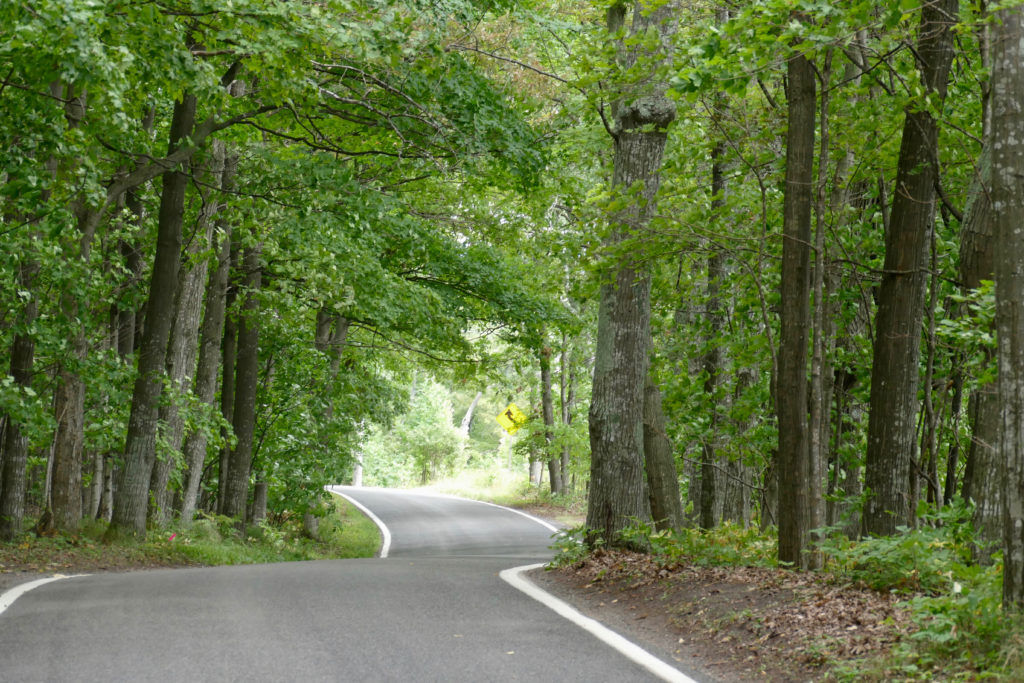
I approach from the north, stopping at the historic Polish-themed Legs Inn in Cross Village where you can spend hours taking in all the details of wood and stonework, or if you’re hungry, enjoy some kielbasa and pierogi. The famous 20-mile section of M-119 that kicks off from here is narrow, curvy, and truly a tunnel of foliage, and I’m sure its beauty is staggering in the fall, but it loses points as a premium motorcycle road for its 35-mph speed limit and profusion of deer and driveways. Still, those 137 corners are a lovely way to spend time.
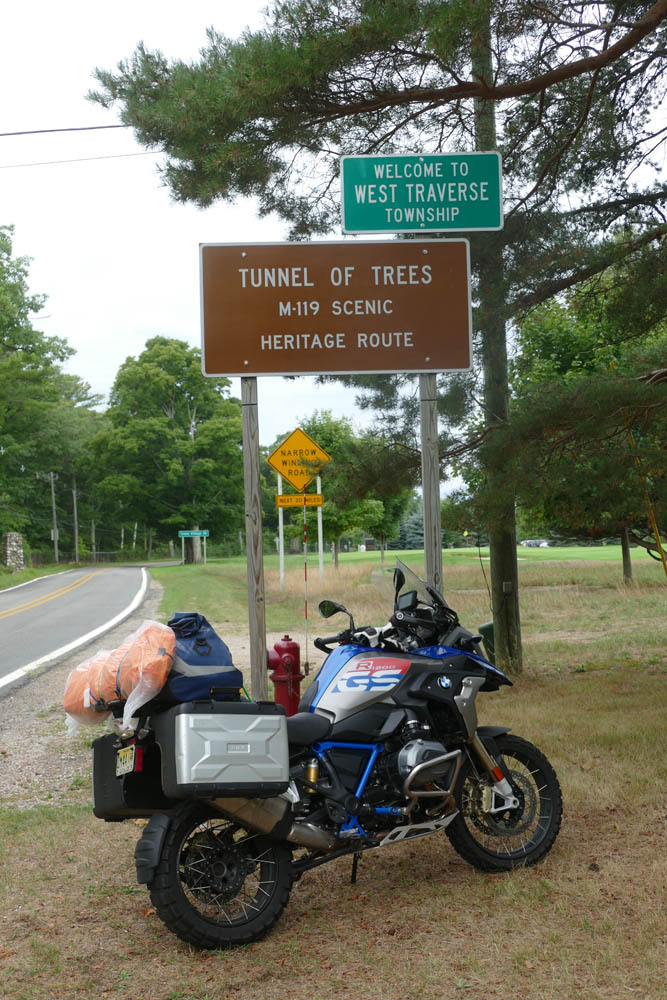
After an overnight in Petoskey, I head for Traverse City and M-22. If there’s one thing that’s undeniable about these Midwestern states, especially their more rural areas, it’s how genuinely nice the people are. Everywhere you go. The M-22 is recommended to me by a new friend, and I take my time exploring Suttons Bay, Northport, and the Leelanau Peninsula’s pretty lakes, all miniatures next to a hulking Lake Michigan.
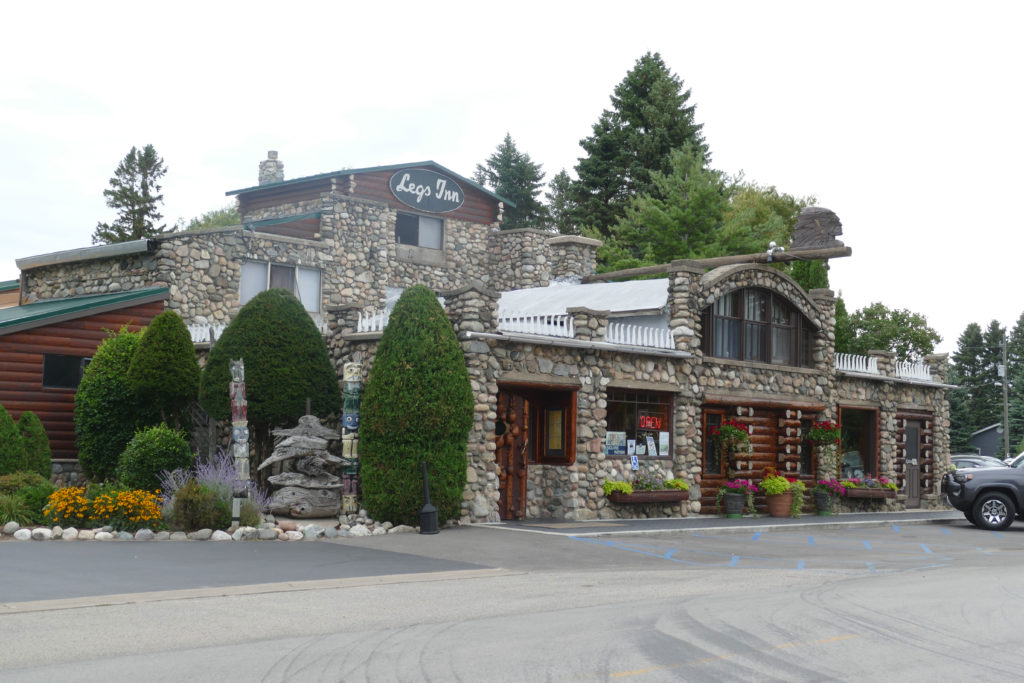
In Glen Arbor, I indulge in house-made cherry ice cream at the original Cherry Republic and slip a jar of cherry salsa in a saddlebag for later. I do not partake in the pit spitting at the establishment’s Olympic-size cherry spitting pit (the world record is 93 feet, 6.5 inches).
In addition to gorgeous views of the lake and rolling farmland, this part of Michigan has local wines to taste, dunes to explore, and apples to pick. The longer I spend on M-22, the more I realize it’s not just a road to the people in this area, M-22 represents a lifestyle. In fact, the M-22 highway signs have been stolen so often – 90 signs in three years – the Michigan DOT dropped the M on some replacements so they show only the number 22. If you missed your chance to nab a sign, there are plenty of places along the highway where you can buy a fake, as well as upscale M-22 apparel and souvenir tchotchkes.
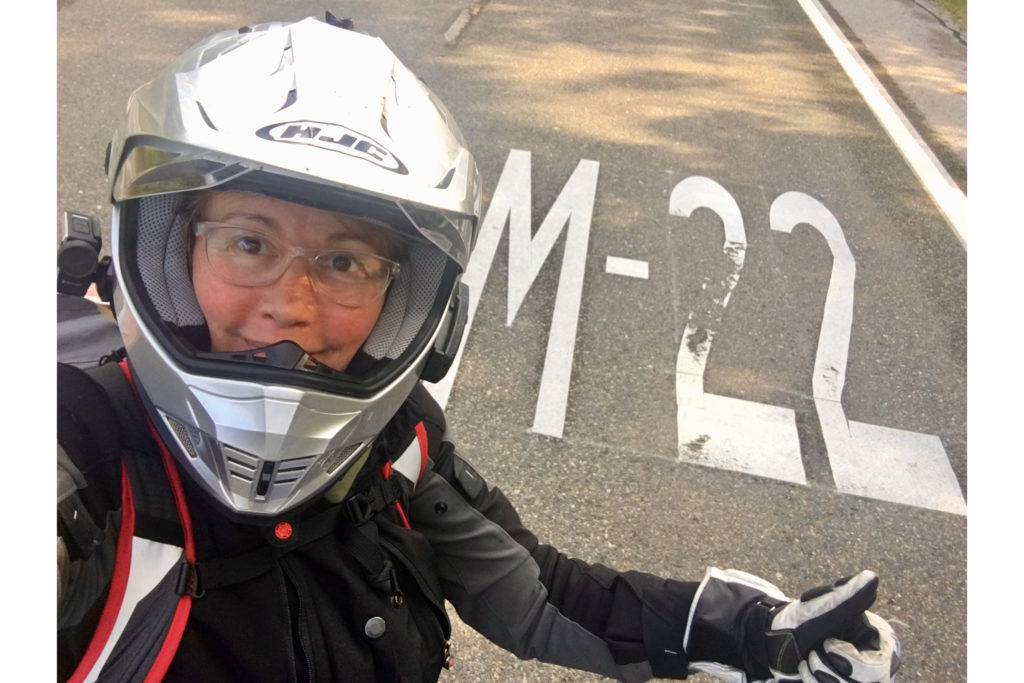
And I get it. There’s something about this area (the people? the chill vibe? the scenery?) that just makes you want to stick around and explore every corner. Sadly, I don’t have time or tread for further exploration, and chug east from Manistee to Bay City, overnighting in some basic chain motel and wishing I was back in my tent on the lakeshore. In the morning, I scoot down I-75 to get the GS serviced and shod at BMW Motorcycles of Southeast Michigan. Again, the nicest people.
Over the next five weeks I’ll ride through another 13 states, many of them bucket-list destinations for motorcyclists. And yet I’ll keep thinking about this Great Lakes area and its empty roads, slow pace, and big-hearted locals. If you’ve ridden there, you know. If you haven’t, go. I’ll be right behind you.
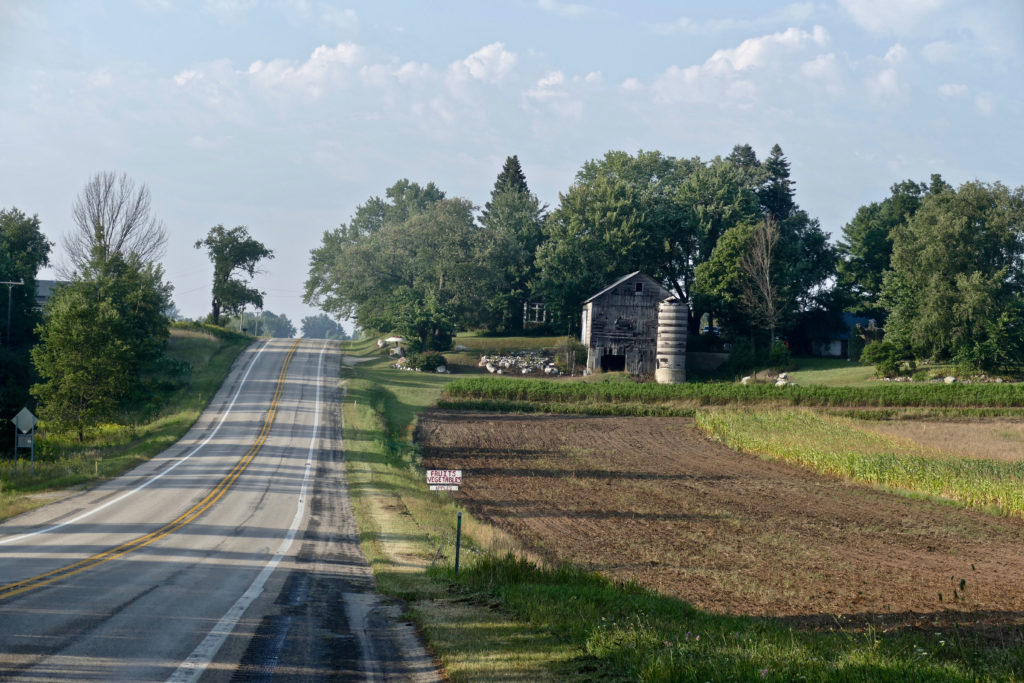
The post Great Lakes Getaway: Touring Minnesota, Wisconsin and Michigan first appeared on Rider Magazine.
Source: RiderMagazine.com

